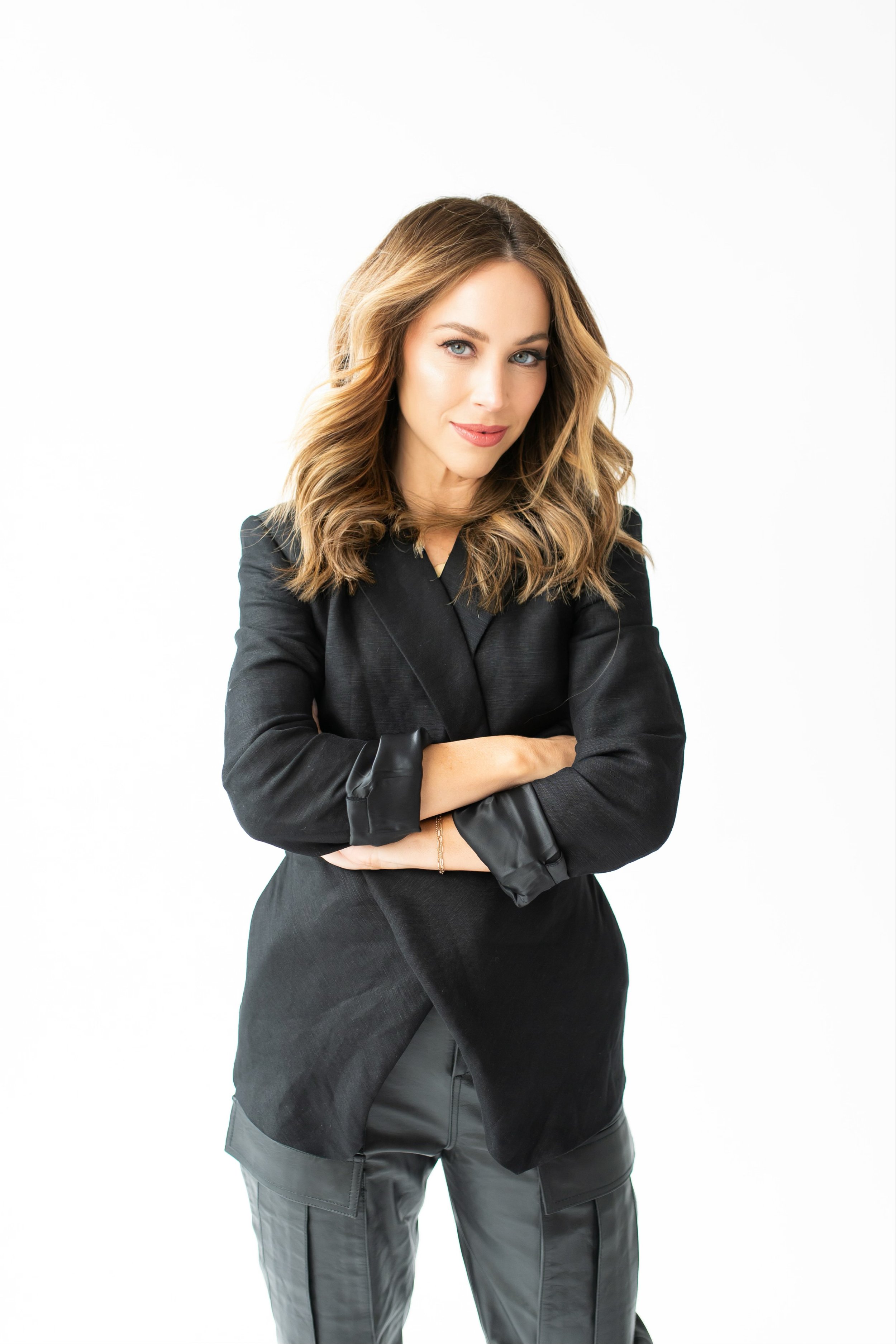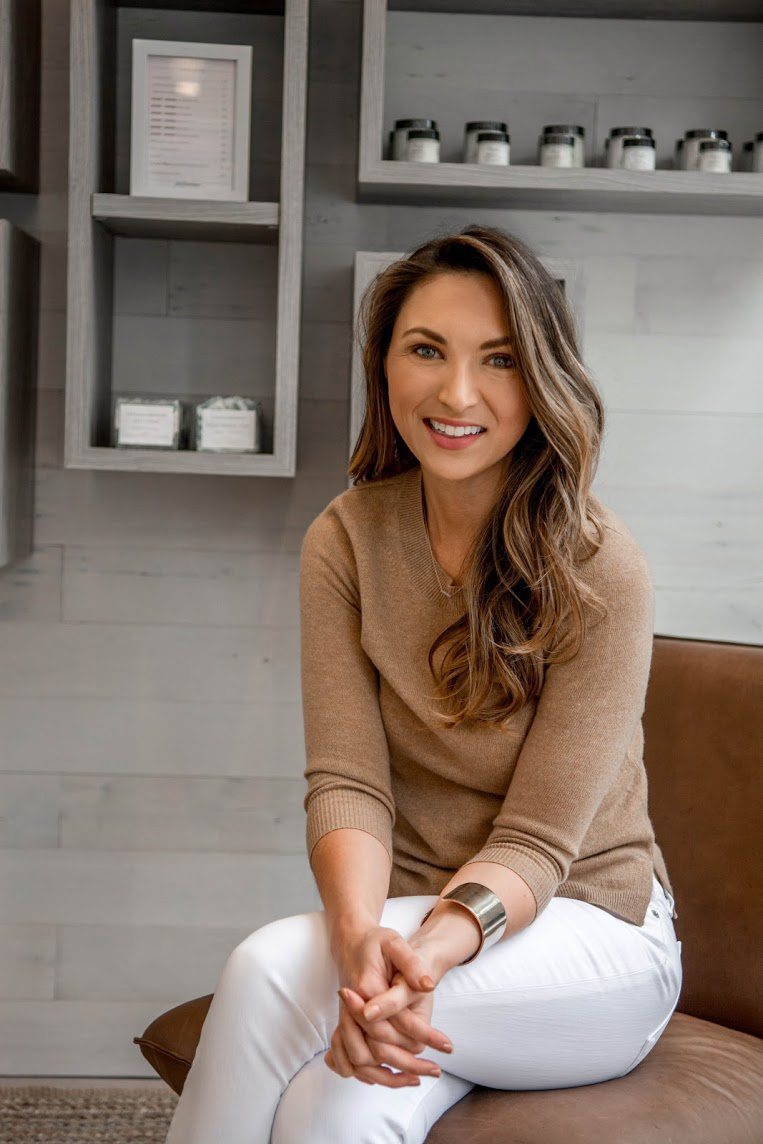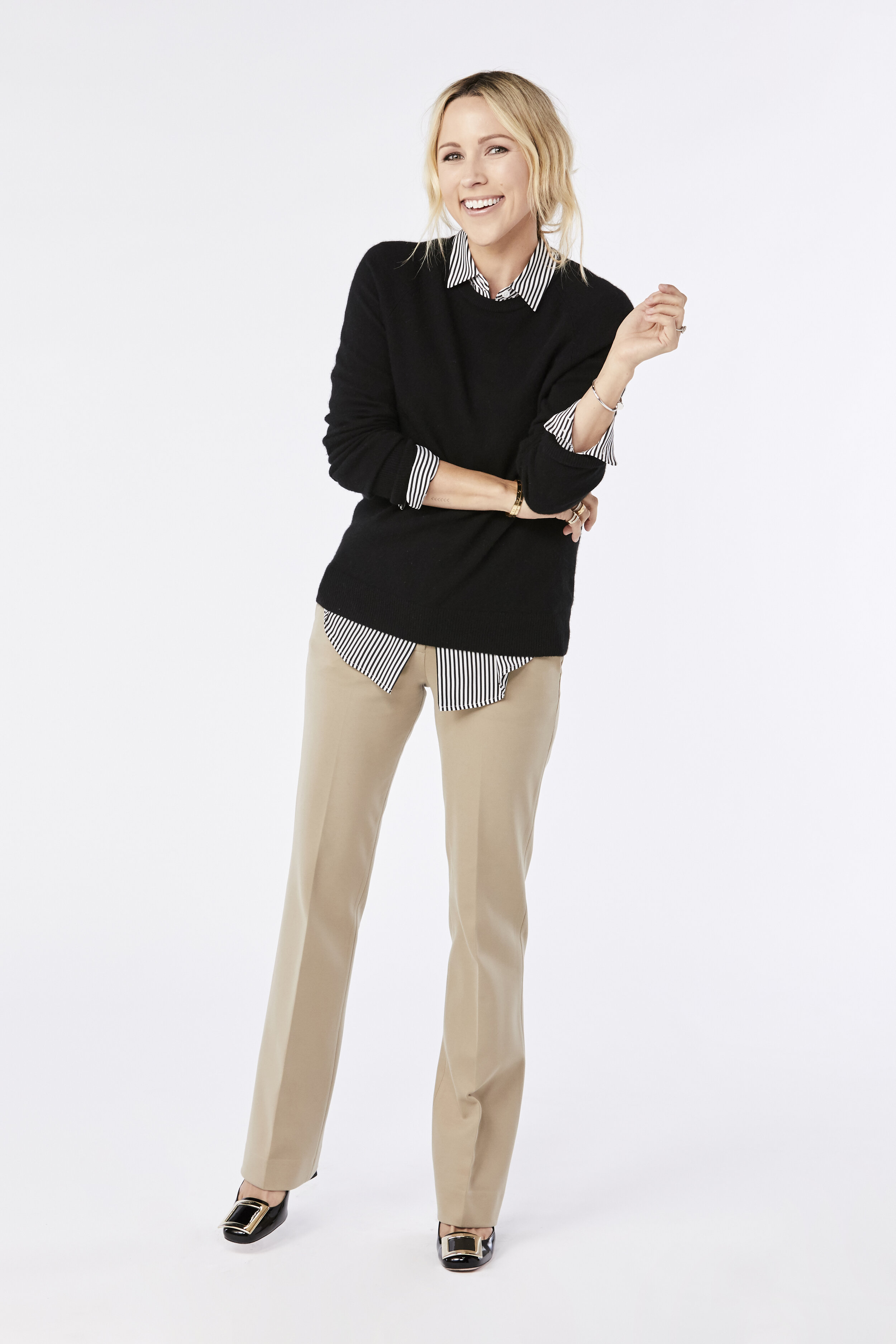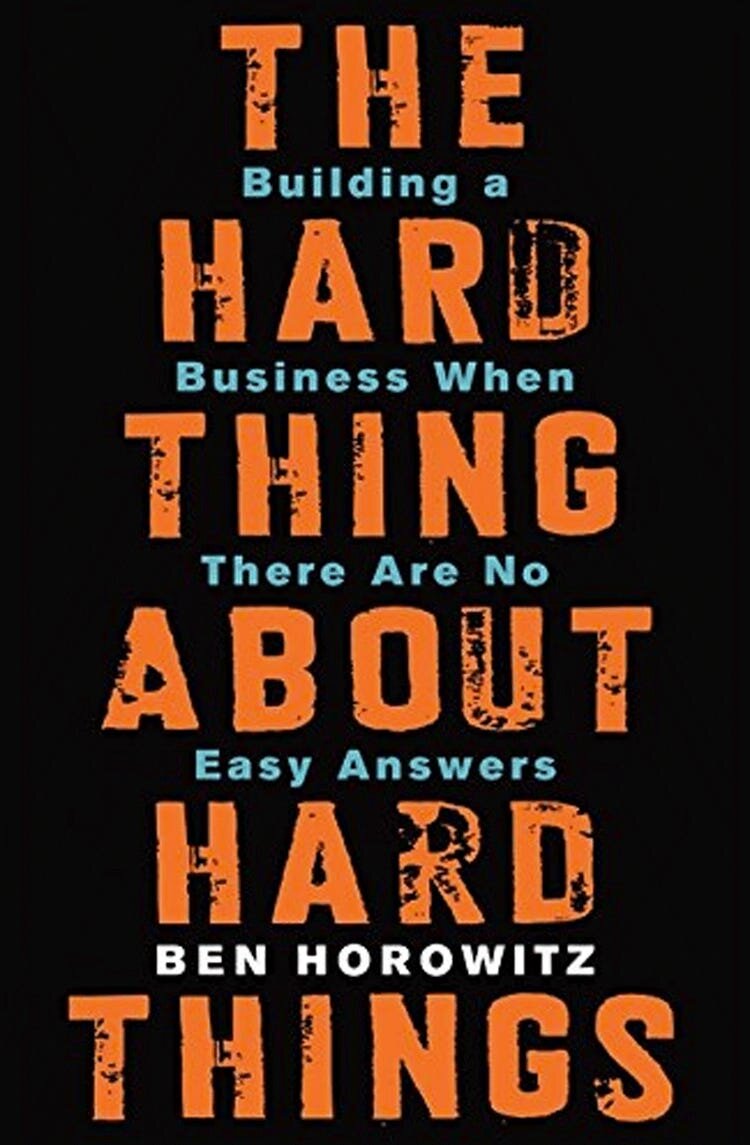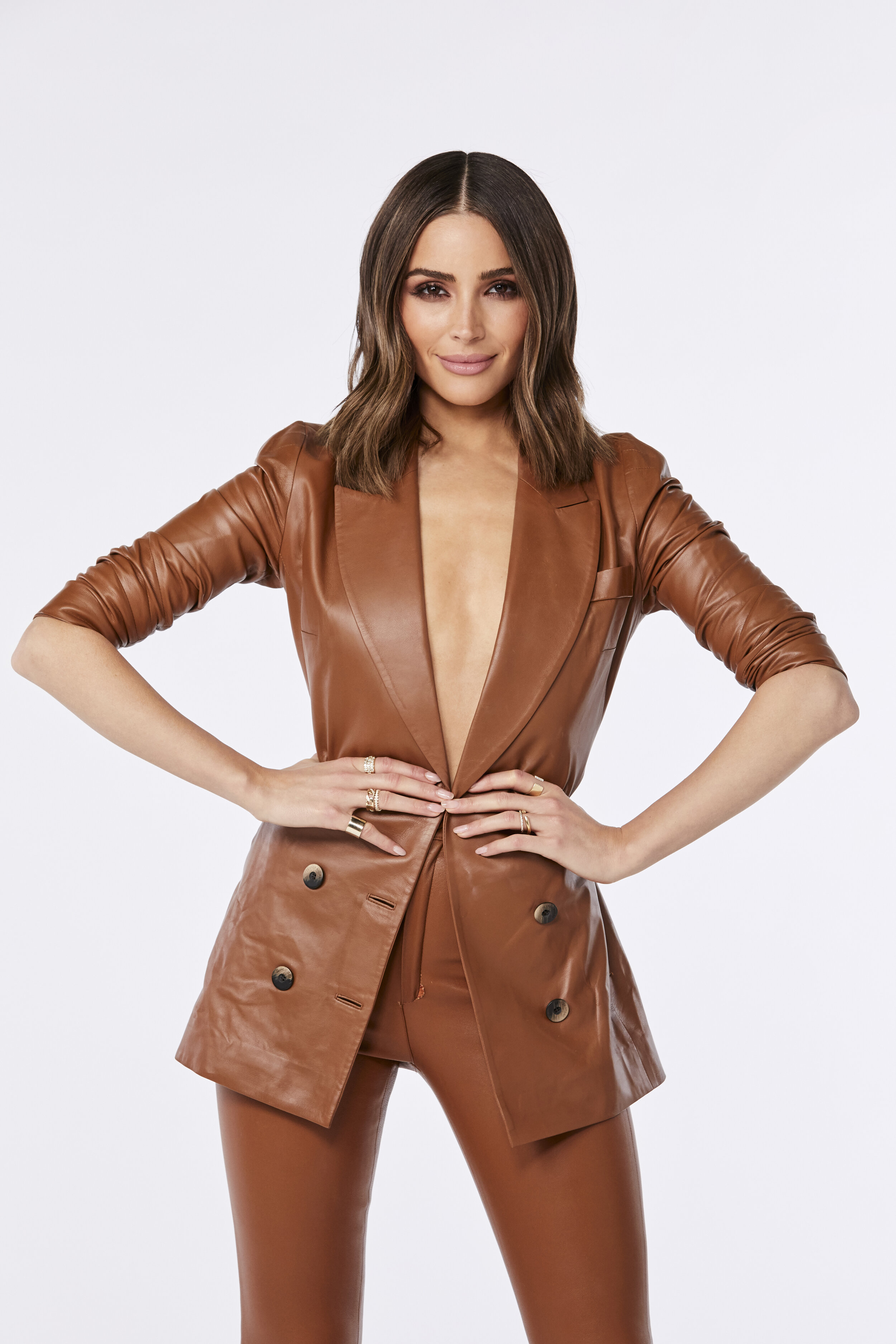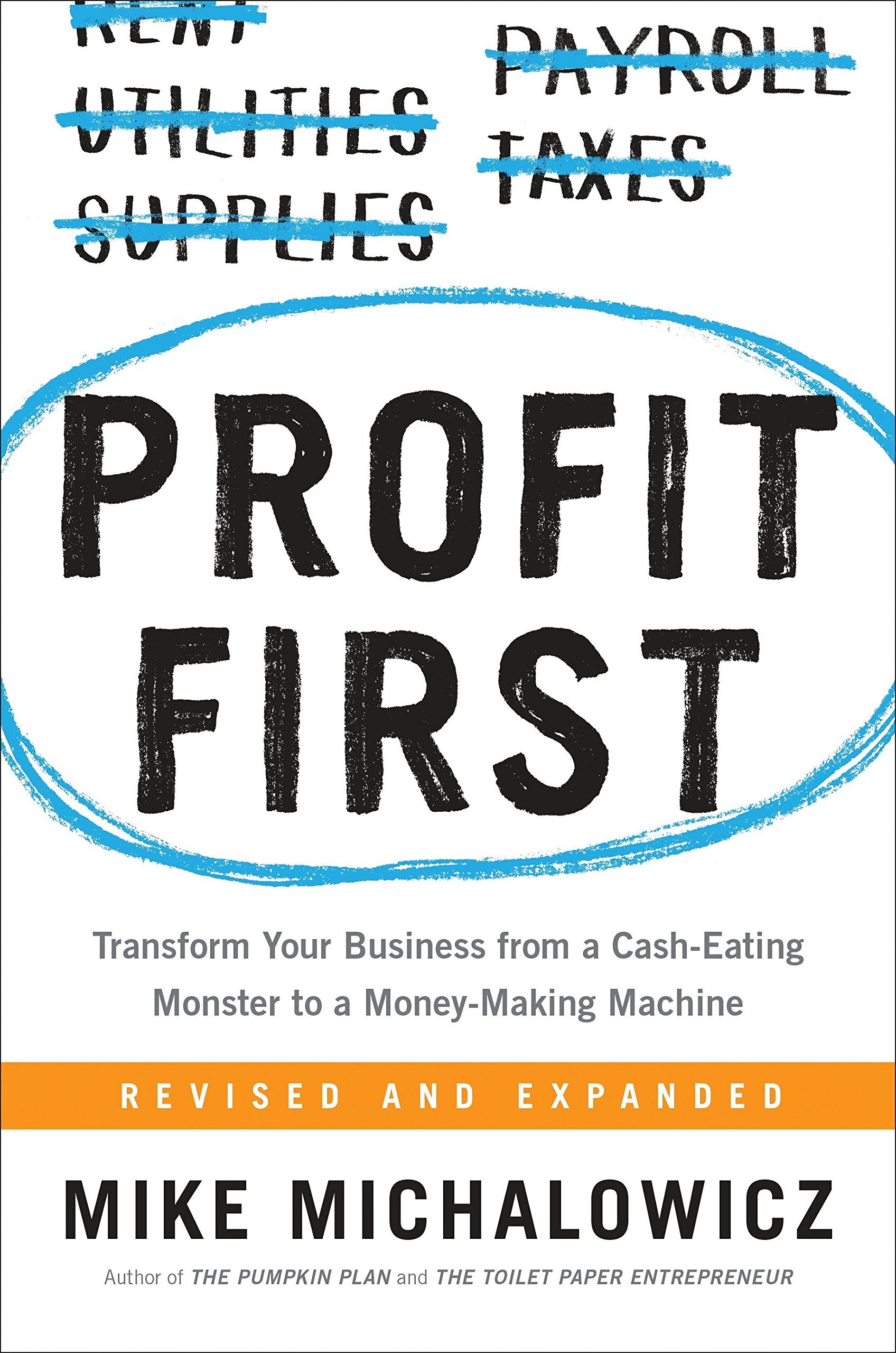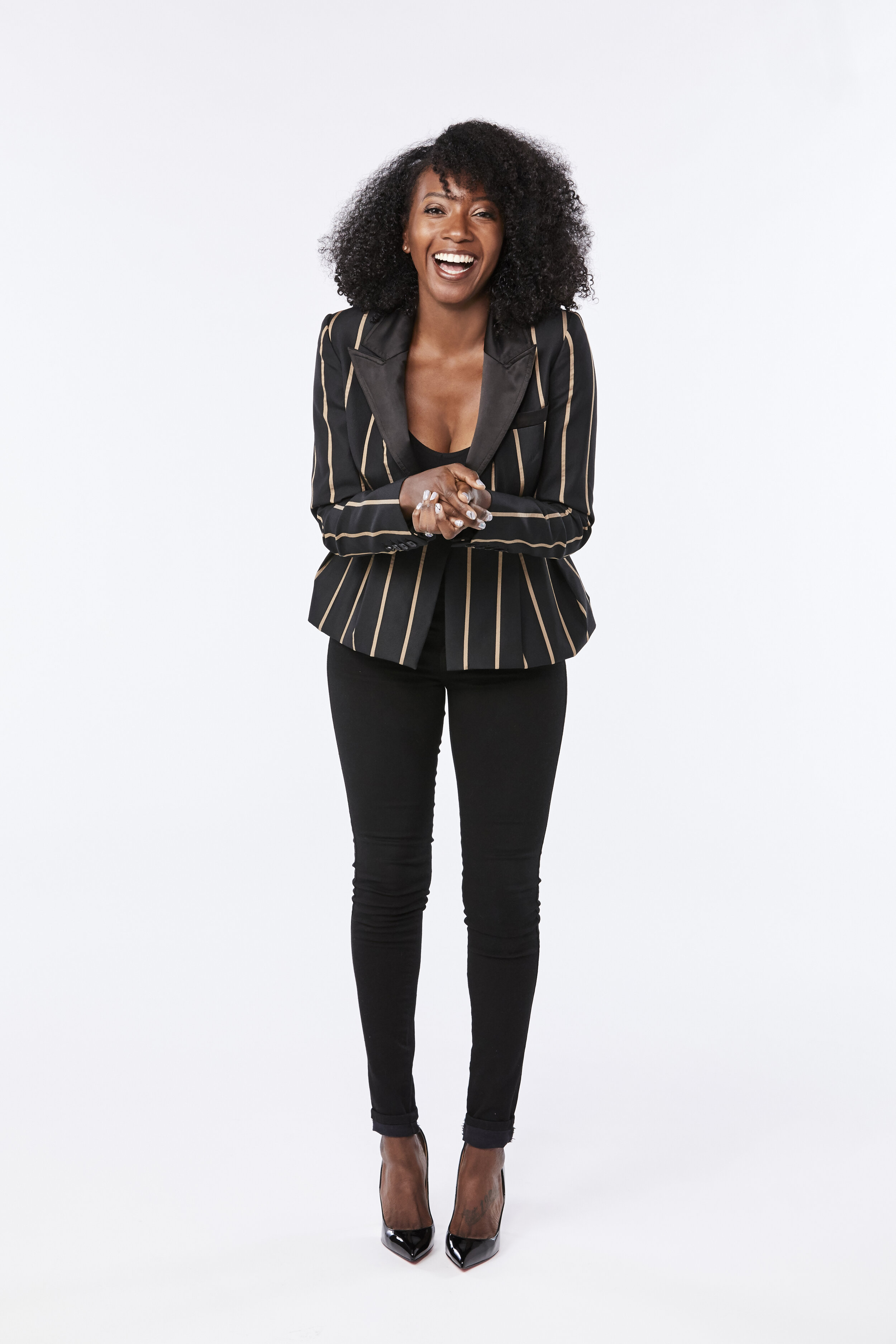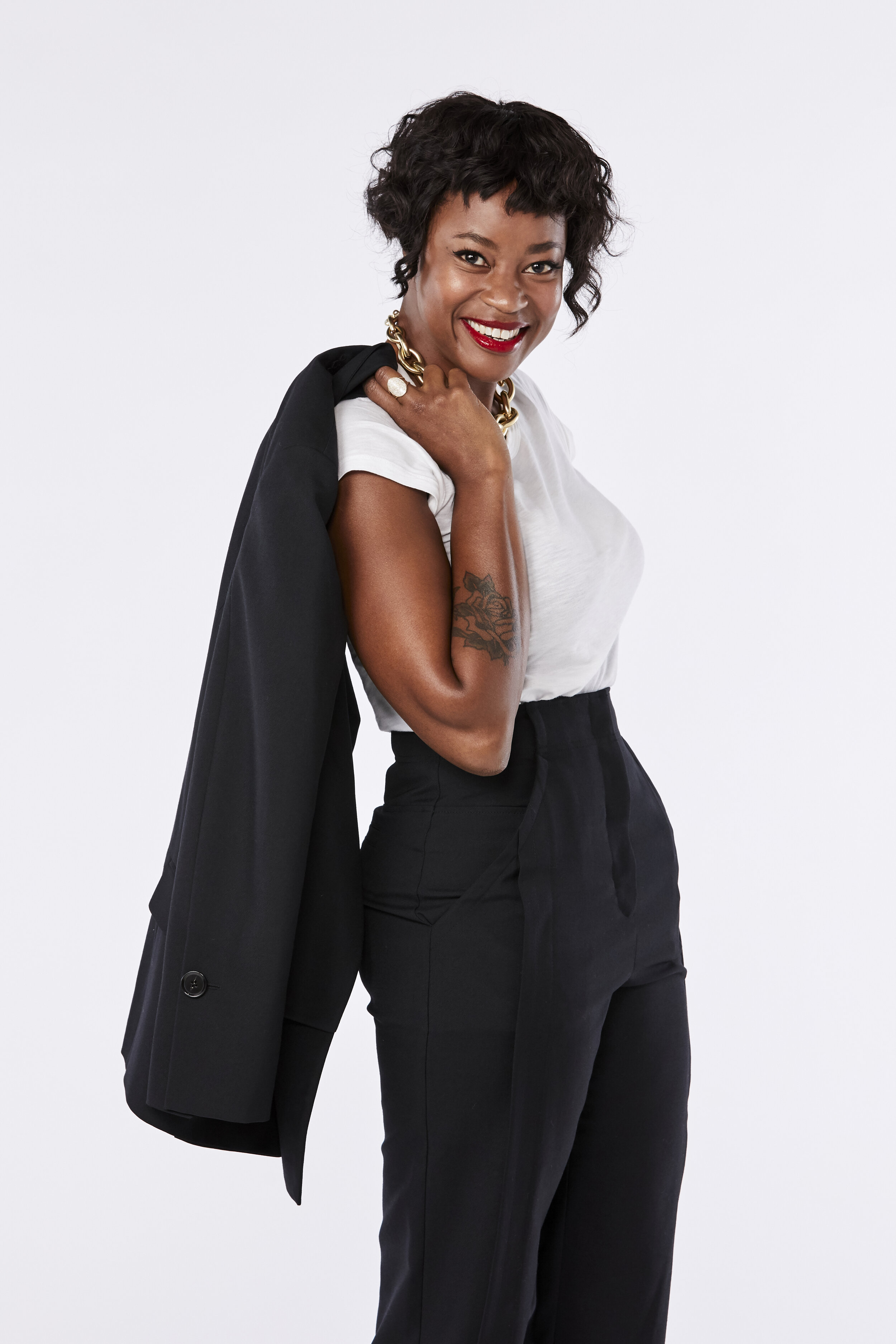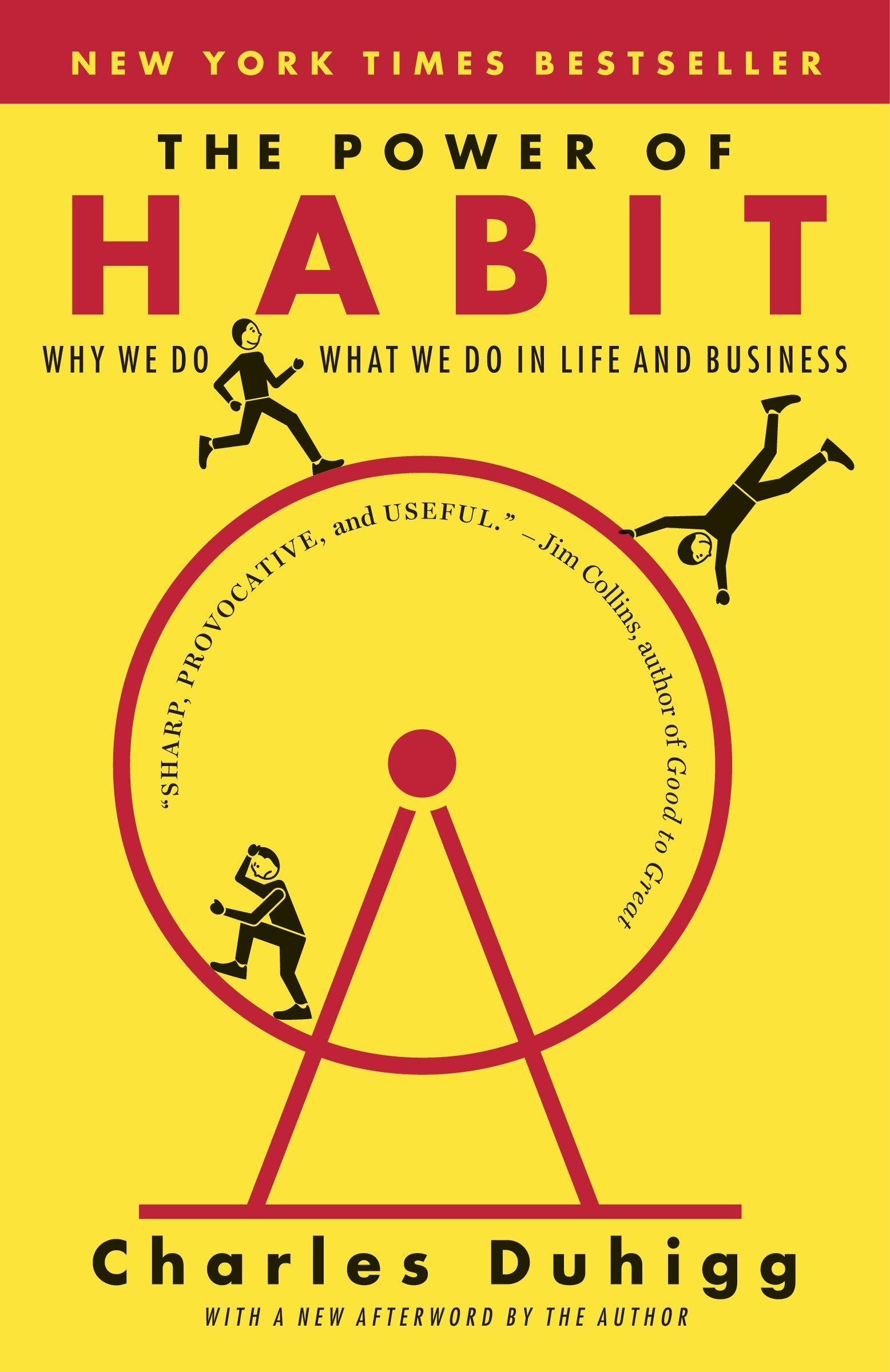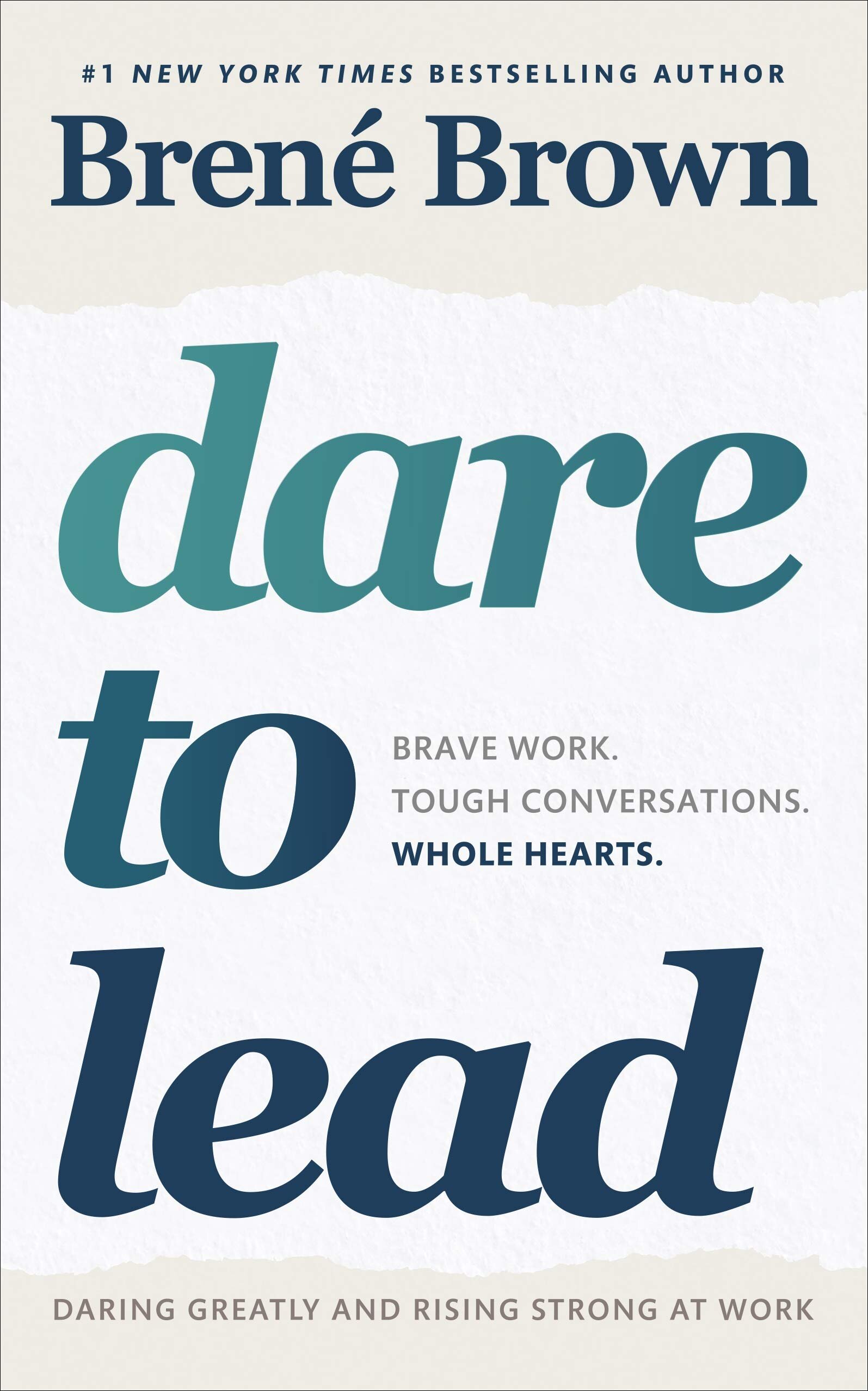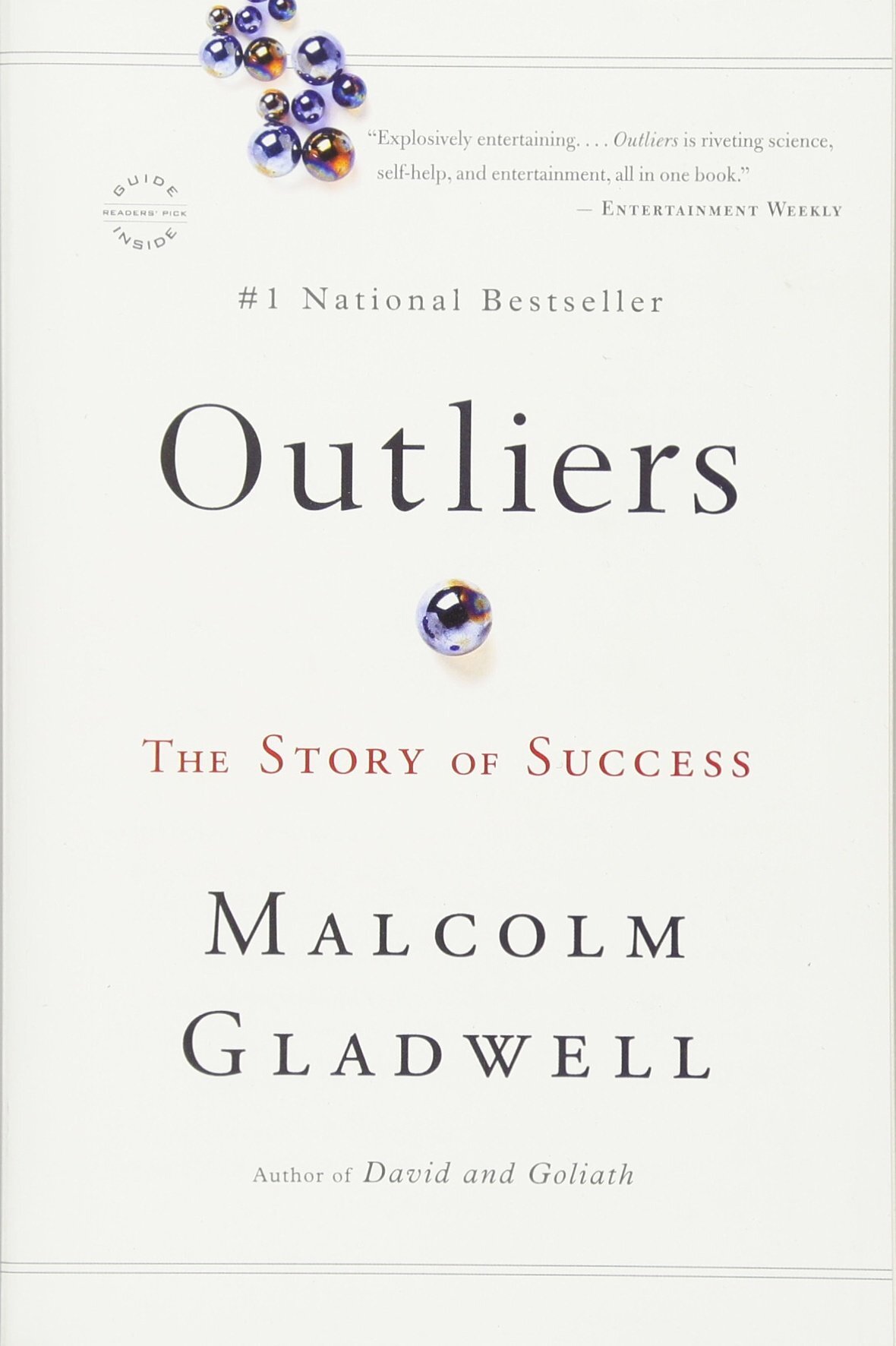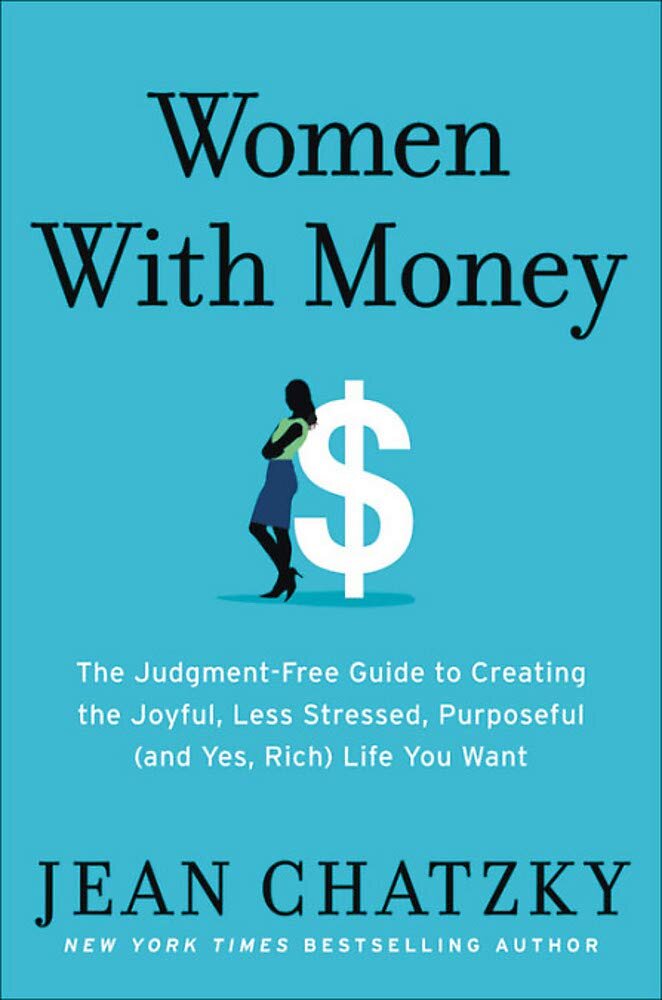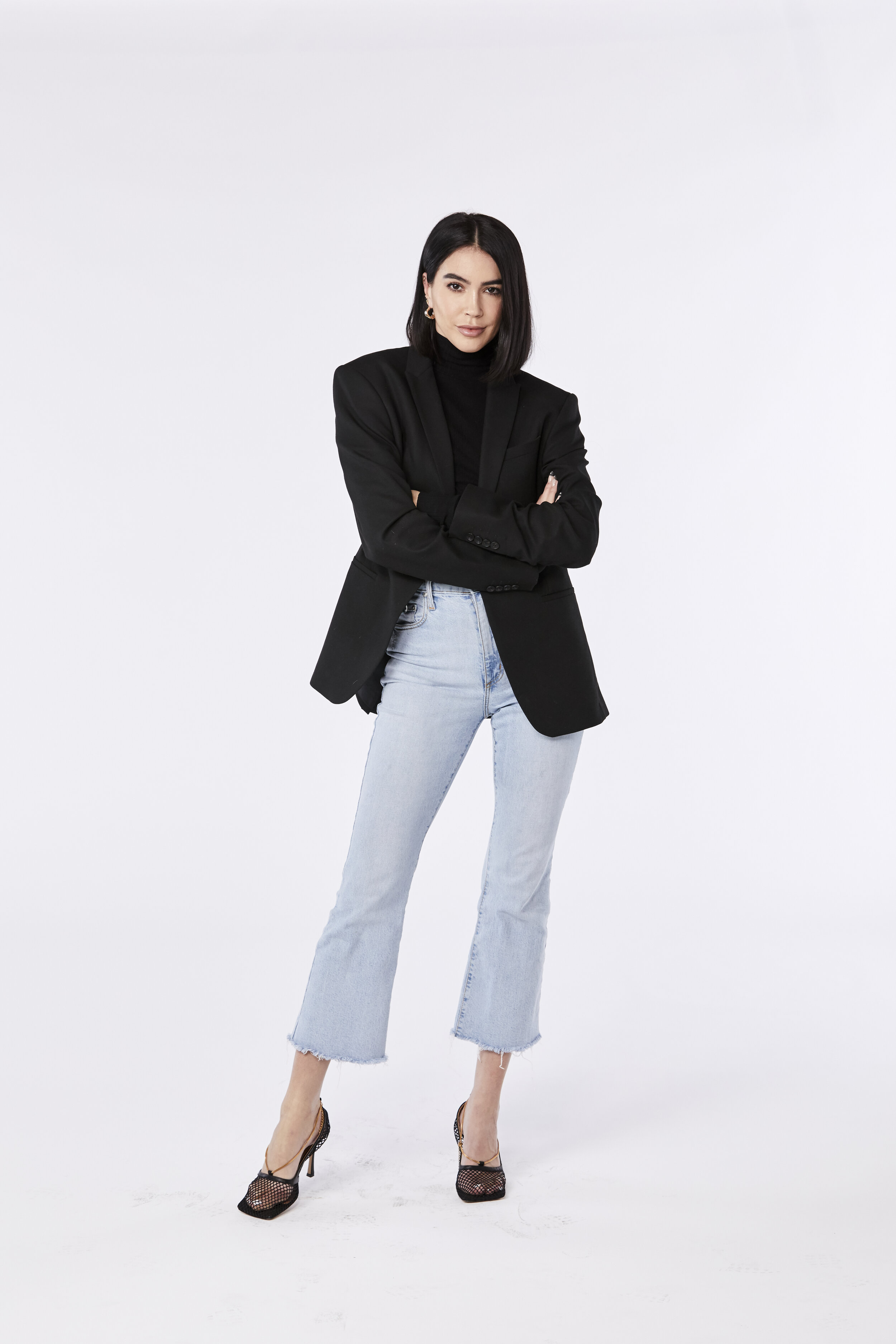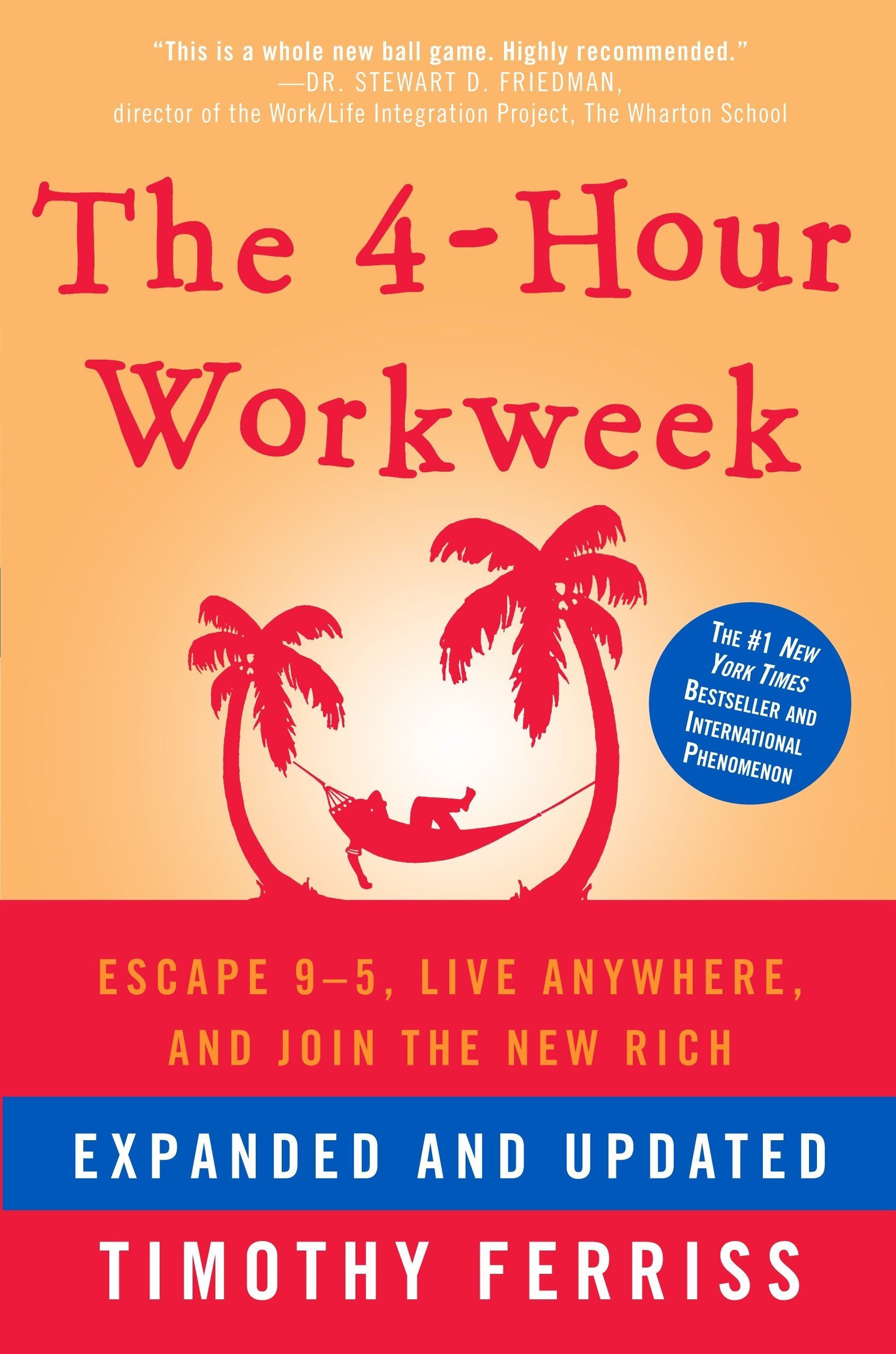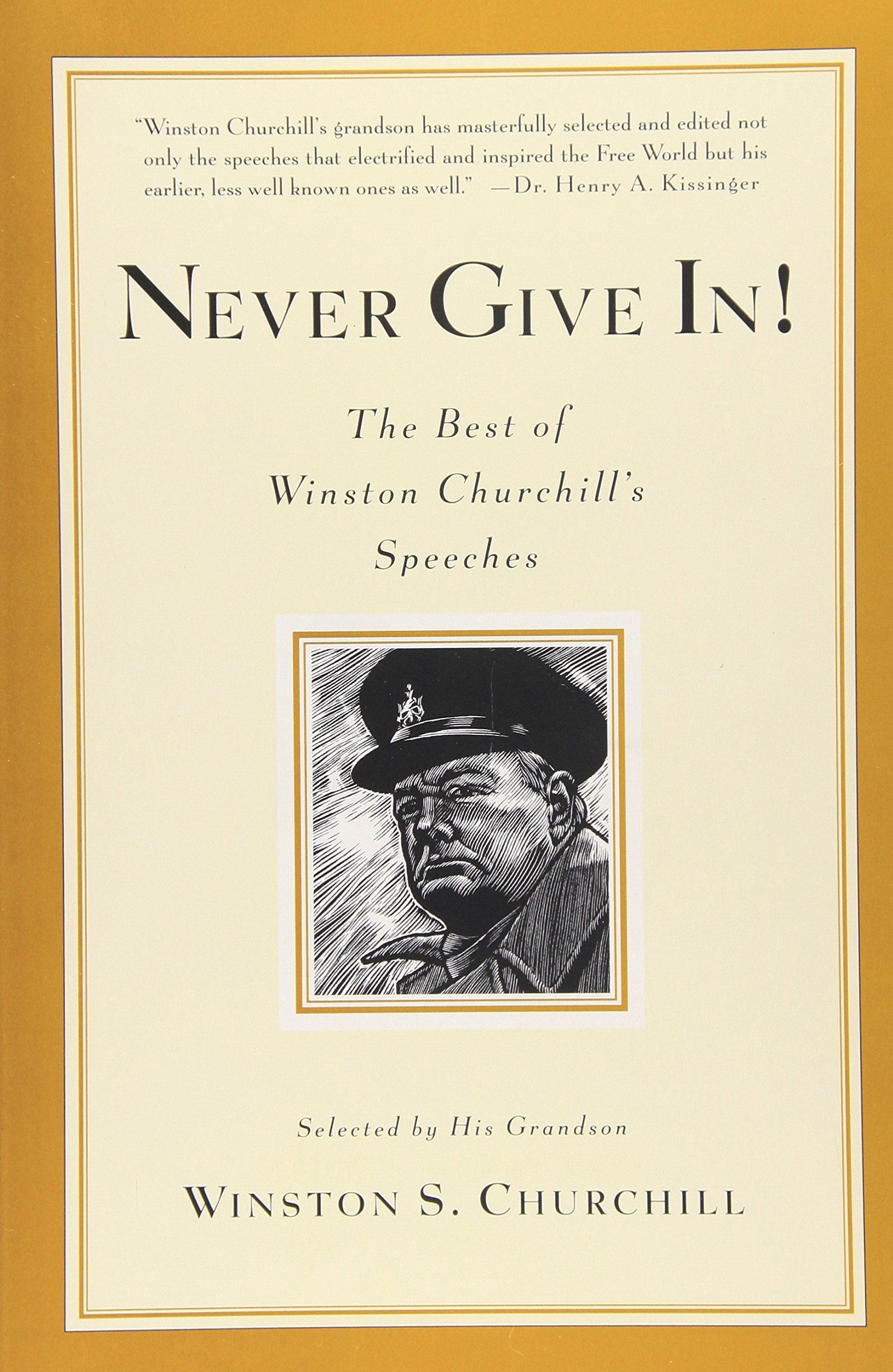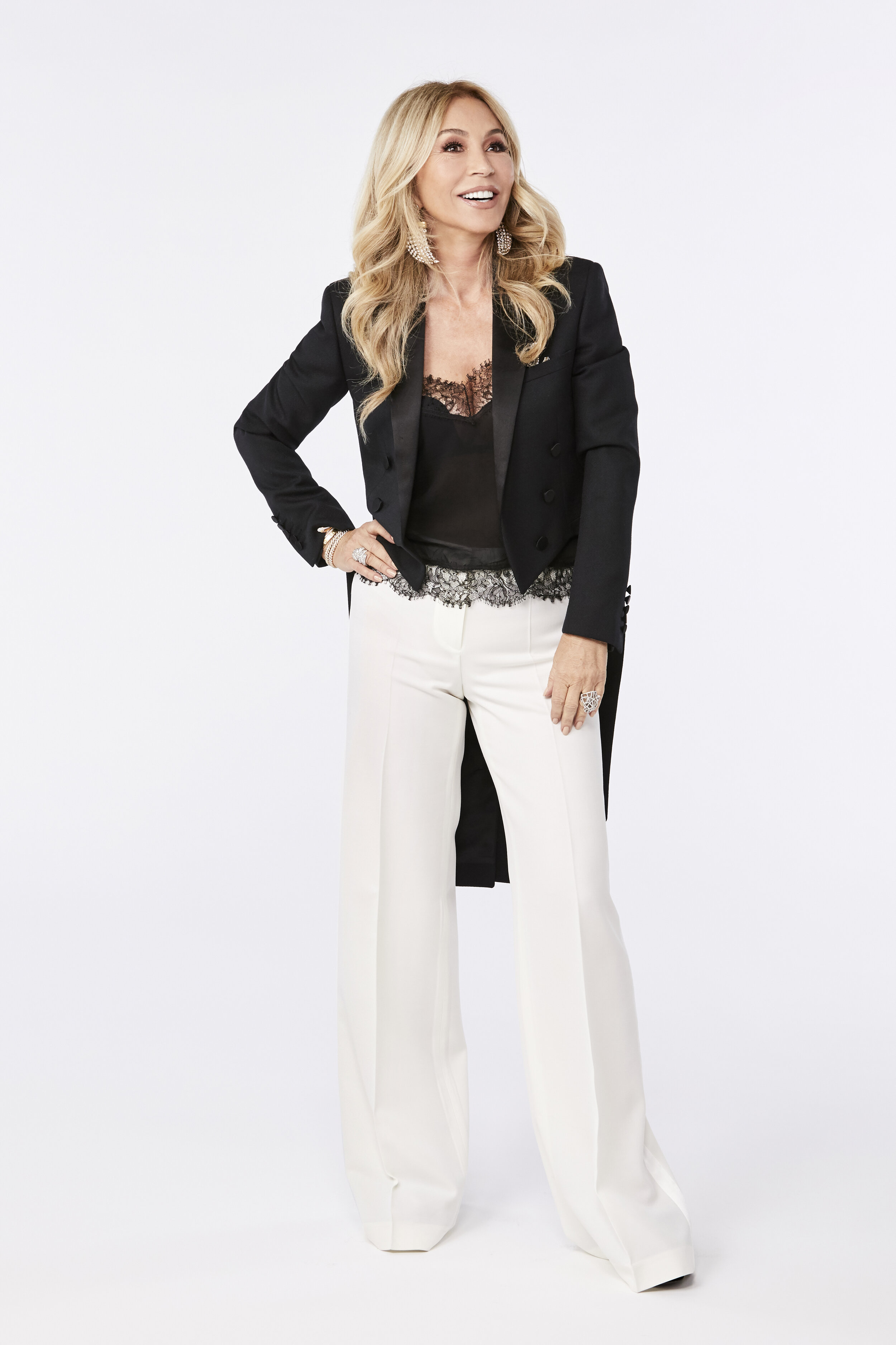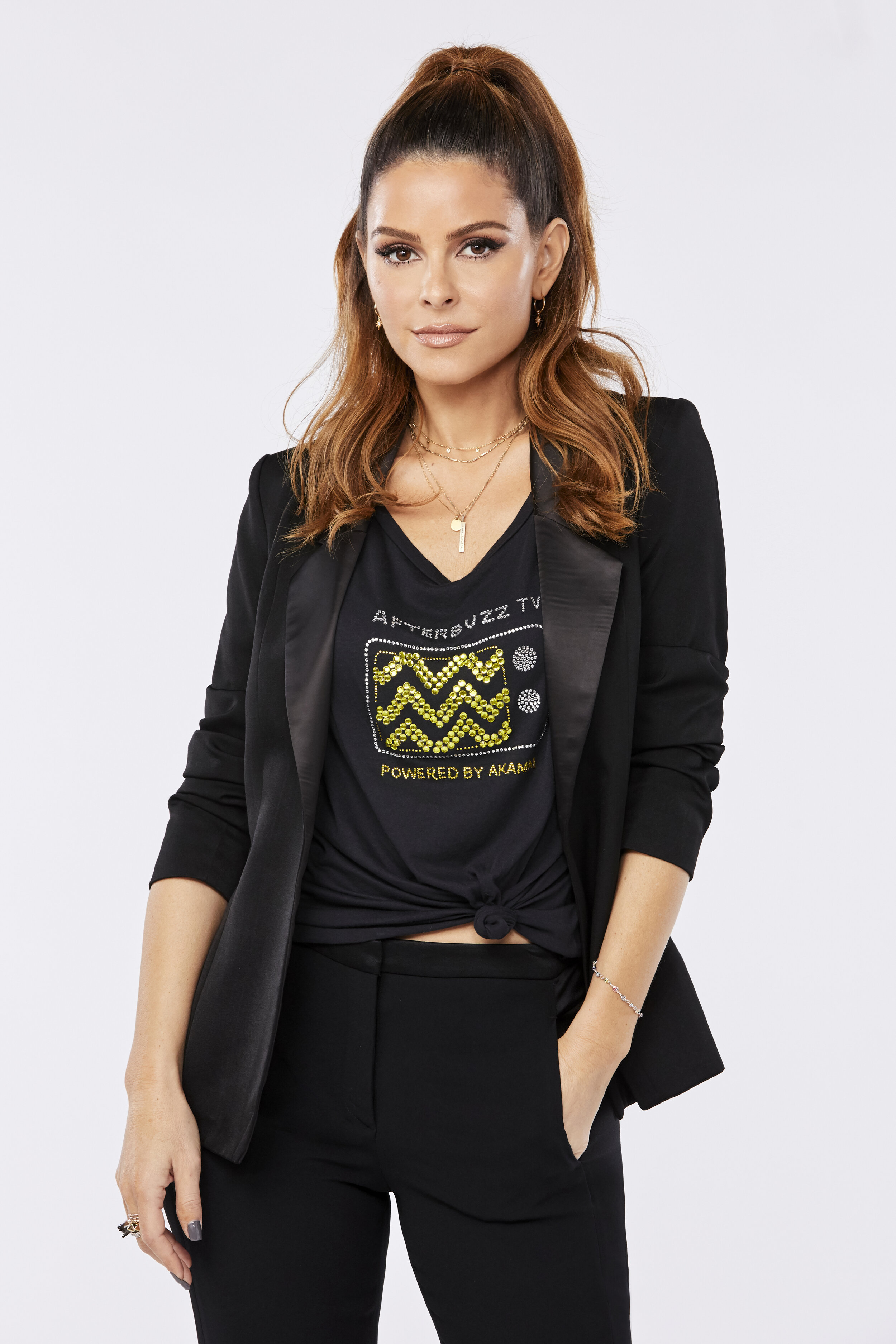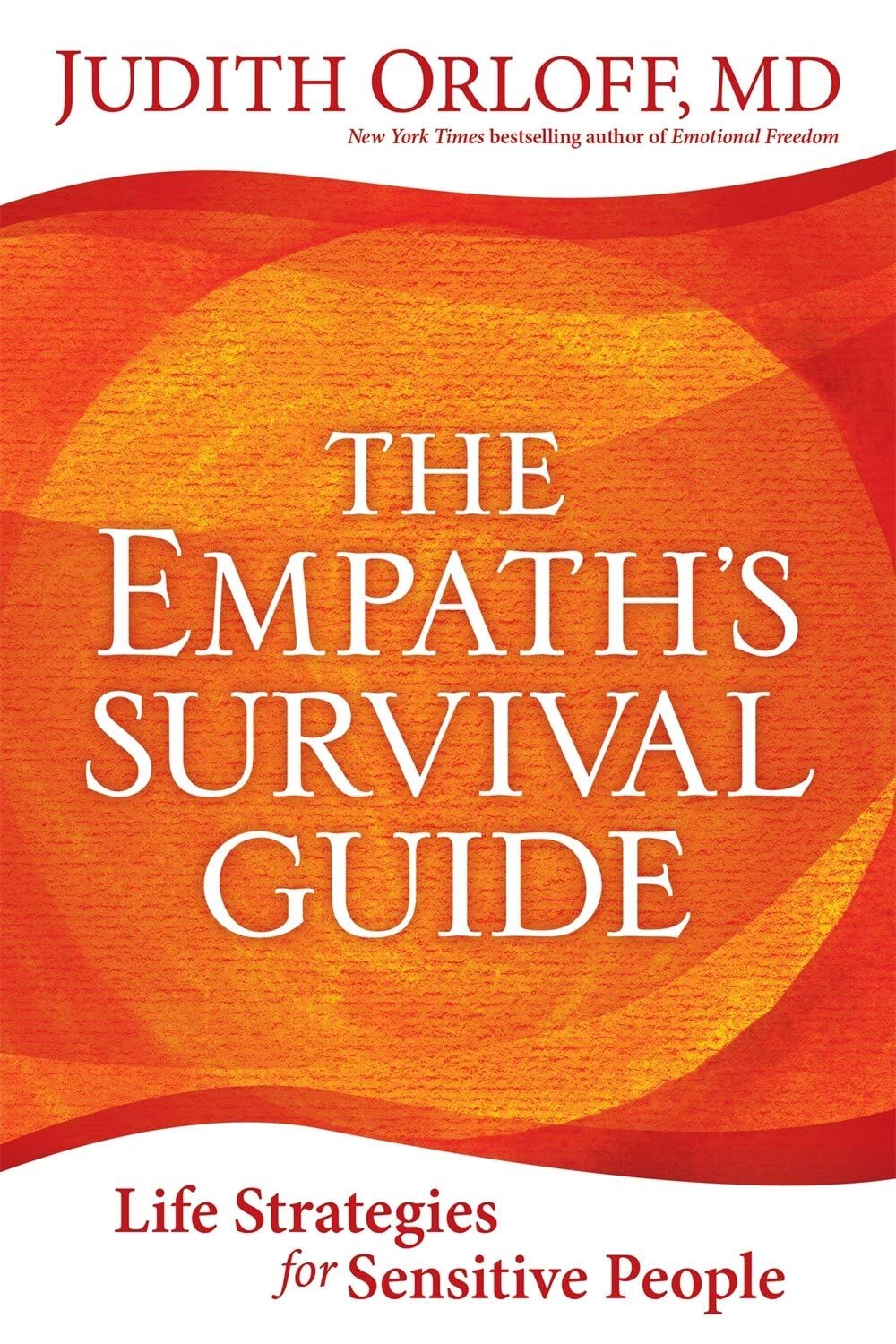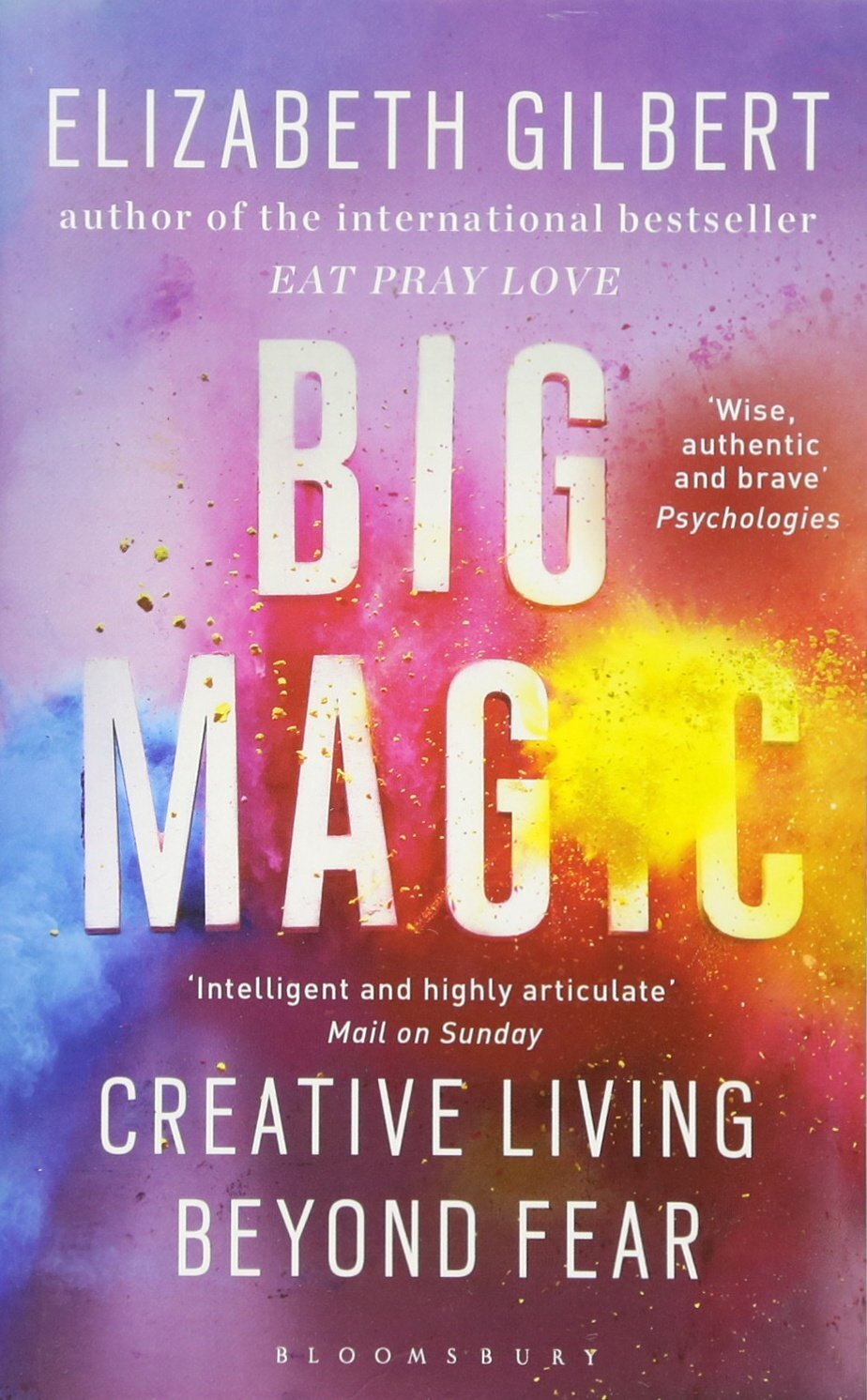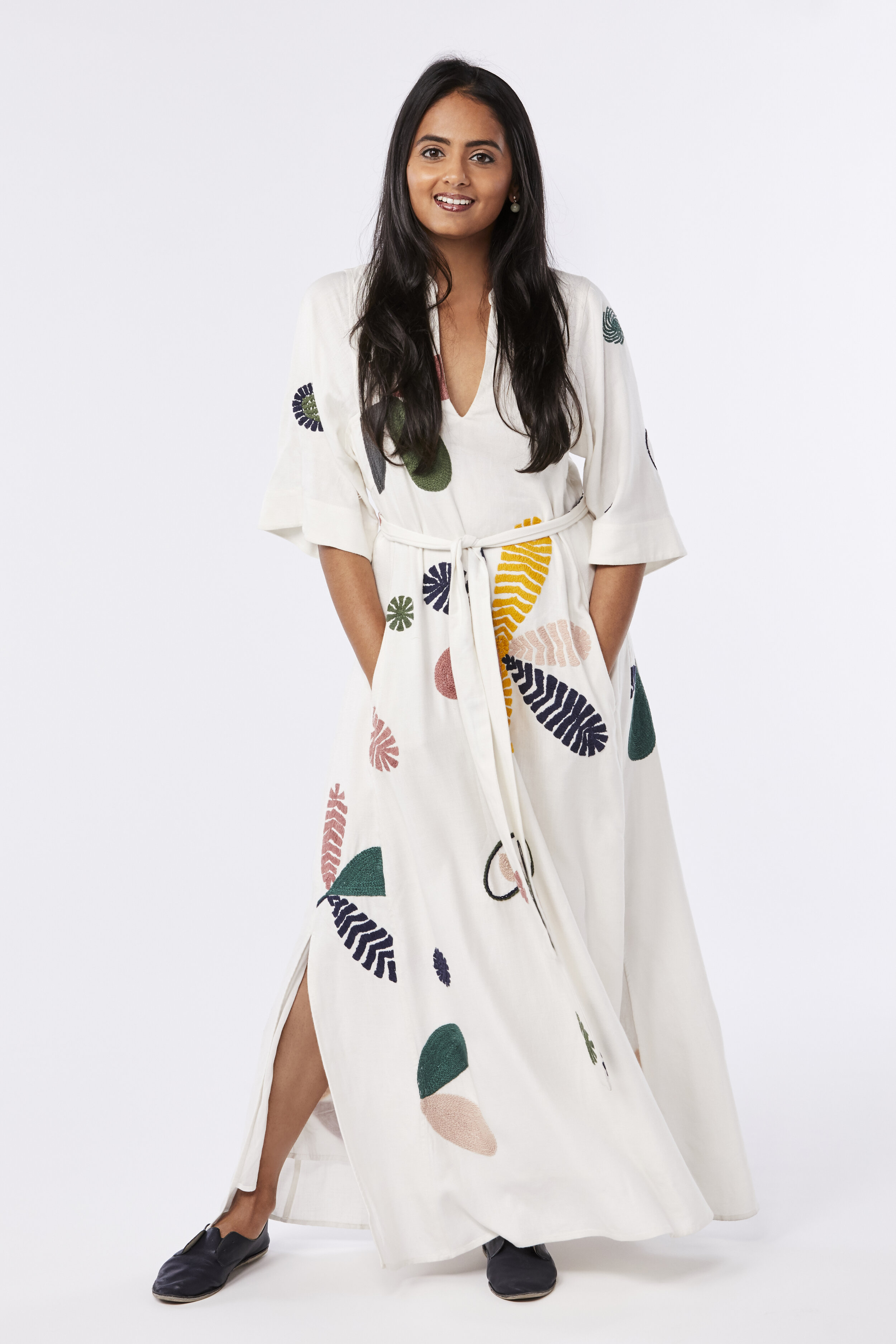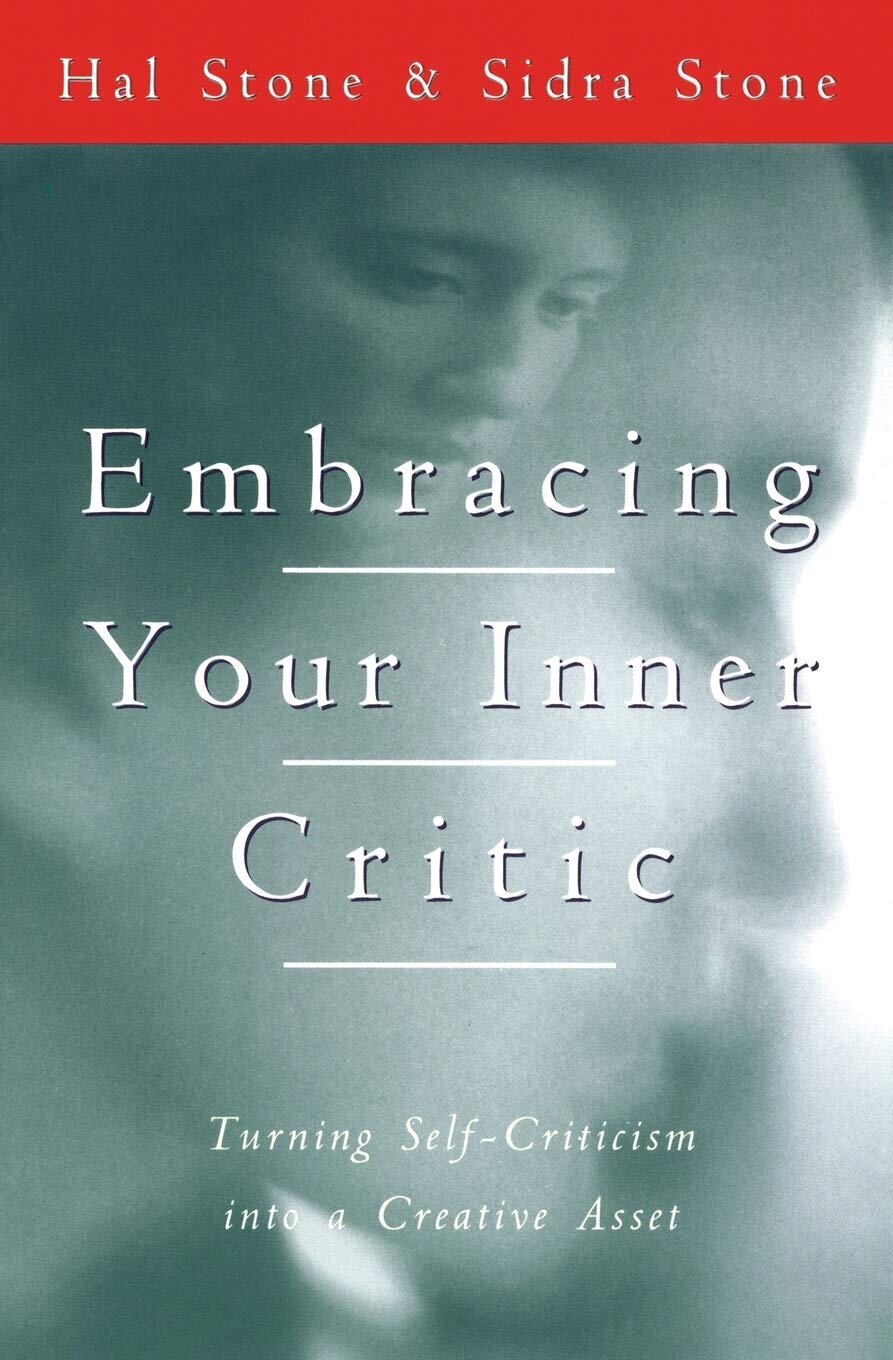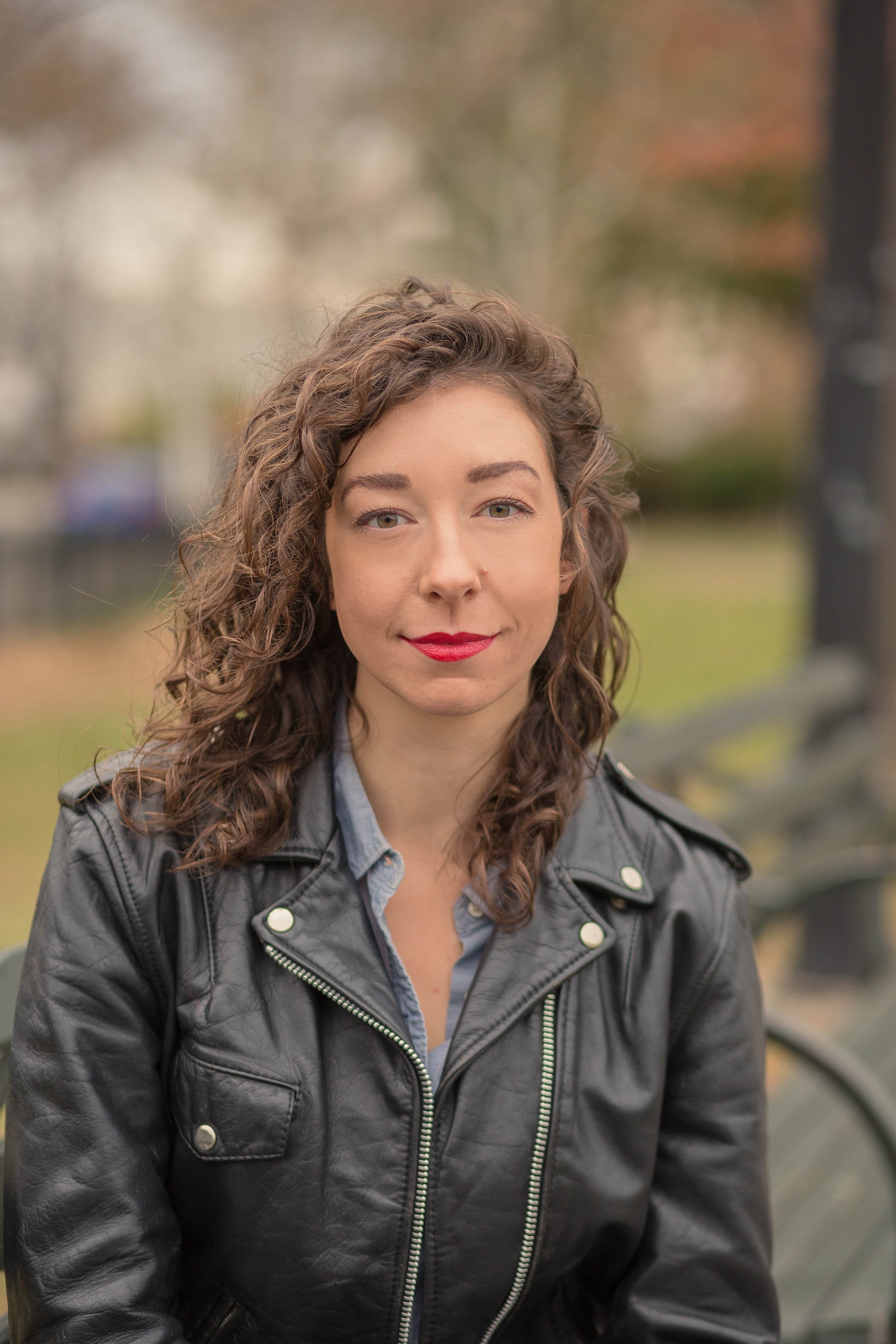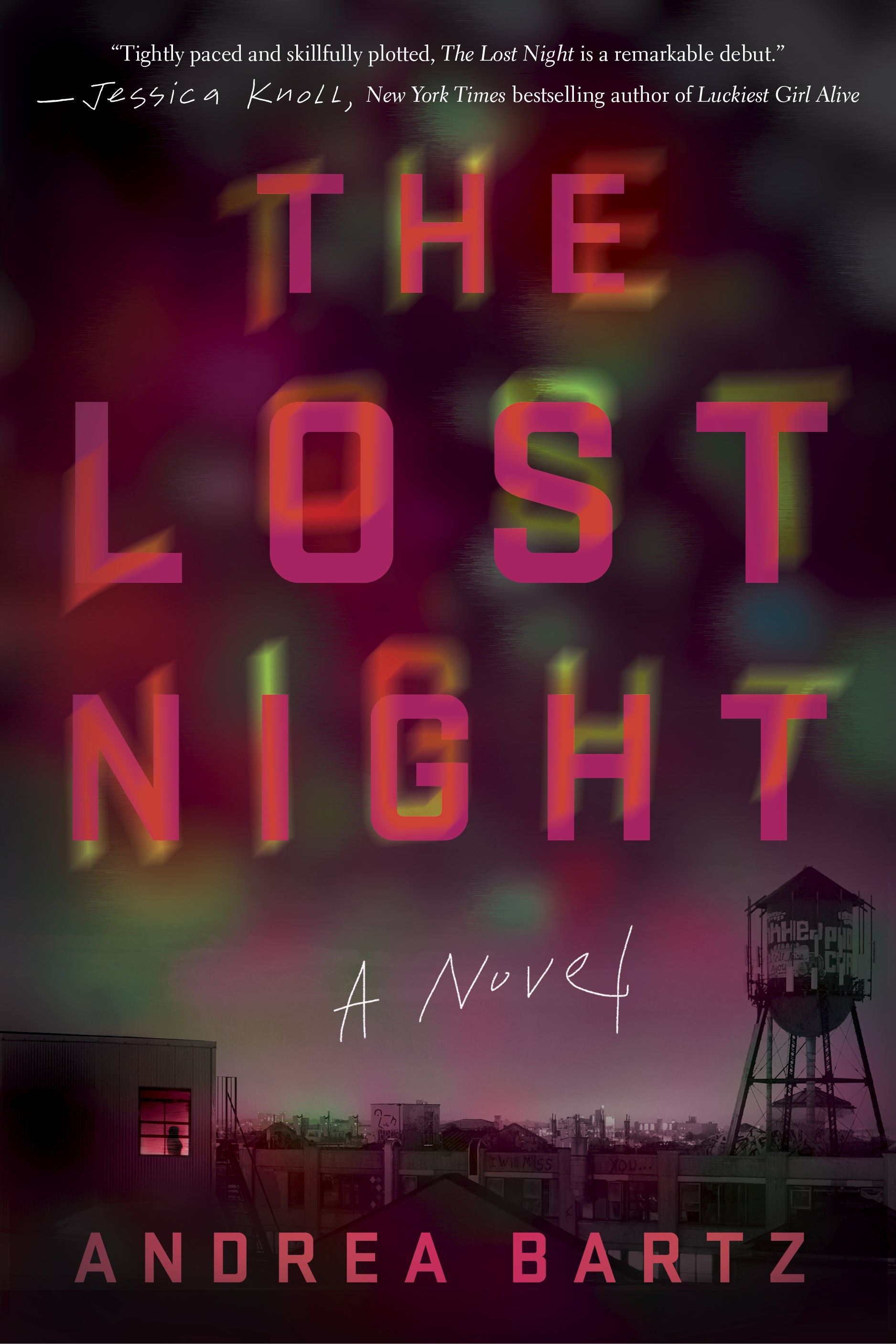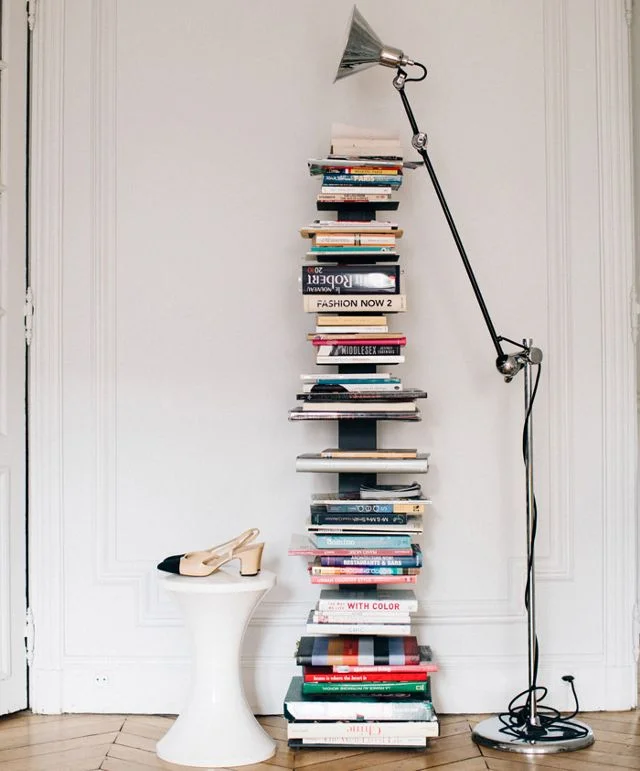10 Empowering Books By Women to Enhance Your Career (and Life)
Your to-read pile = sorted.
Photo: Kaboompics .com for Pexels
Achieving your career goals, trying to be a successful adult, and keeping your personal life in check can sometimes feel impossible. (If you’re juggling a million tasks and still trying to find time to watch The Bachelor with the girls, trust us, we know the struggle). But no matter how often you may feel overwhelmed, it’s important to know that you can find the balance you’re looking for—it may just take a new way of thinking and organizing your everyday life.
Luckily, there are resources and mentors with proven methods and insights that will help you find the balance between living your best life and getting to work on time. No one ever said achieving work-life balance would be easy, but with these 10 insightful new books, you will be well on your way to reaching both your professional and personal goals in no time. Written by 10 fierce females who know a thing or two about running their own businesses and carving out time for themselves, you’ll find true wisdom and hope in the pages of these self-help and business-focused books.
From the creator of one of the biggest natural hygiene companies to Netflix sensation Marie Kondo to a single mother from the Middle East who rose to the top of the tech industry, these books will leave you with anecdotes that will help you find the work-life balance you’ve been craving. If you want to find the perfect work-life balance, add these insightful books to your to-read pile ASAP.
Supermaker: Crafting Business On Your Own Terms
by Jaime Schmidt
Once upon a time, Jaime Schmidt was pregnant and making natural deodorant products in her kitchen in Portland, Oregon. In just seven years, Schmidt had made a name for herself and sold the company to Unilever for nine figures. In her inspiring and insightful book, Supermaker, Schmidt reveals how aspiring entrepreneurs can start their own businesses on their own terms. With tips on marketing, product development and other useful tools, this book gives readers the inside look at what it takes to be successful as a founder and as a woman.
The Upside of Being Down: How Mental Health Struggles Led to My Greatest Successes In Work and Life
by Jen Gotch
Jen Gotch is the CCO and creator of multimillion-dollar brand, Ban.do, but what many people don’t know is that Gotch didn’t always have the easiest time finding success. Struggling with her mental health from a young age, she was determined to understand how her diagnosis could help boost her creative process. In The Upside of Being Down, Gotch shares candid stories about her failures and successes and how to embrace the parts of life you can’t control.
Slay Like a Mother: How to Destroy What’s Holding You Back So You Can Live the Life You Want b
y Katherine Wintsch
Katherine Wintsch is no stranger to the difficulties of wearing multiple hats in both her professional and personal life. In her debut self-help book, Wintsch uncovers what it takes to be a mother, wife, friend, and successful CEO. Slay Like a Mother teaches readers how to get past the “just fine” mask women often wear, set realistic goals that you can actually achieve and realize the difference between struggling and suffering. If you’re a fan of Rachel Hollis, you’ll love this new release.
It’s About Damn Time: How to Turn Being Underestimated into Your Greatest Advantage
by Arlan Hamilton and Rachel L. Nelson
Despite being homeless and underestimated, Arlan Hamilton always dreamed of success. Without any contacts, a college degree or a background in finance, Hamilton used her determination and strength to become a highly-respected investor in Silicon Valley, investing in businesses founded by underrepresented women like herself. In It’s About Damn Time, Hamilton teaches women the importance of believing in yourself, how to create a life you love and the skills you need to make it big when it feels like no one else has faith in your dreams.
Four Faces of Femininity: Heroic Women Throughout History
by Barbara McNally
If you’re in need of a little inspiration from the women who have come before, you’ll love Four Faces of Femininity. Divided into four sections, McNally’s new book celebrates all kinds of successful women and shows readers how important it is to spotlight women from different backgrounds. From Anne Frank to Michelle Obama, this book aims to help women become well-rounded and happy in all areas of their lives. Four Faces of Femininity also includes exercises that will help readers unlock their power and invest in their goals.
Buy Yourself the F*cking Lilies: And Other Rituals to Fix Your Life, From Someone Who’s Been There
by Tara Schuster
As a twenty-something-year-old, Tara Schuster found herself at the top of her career as the vice president at Comedy Central. But what nobody knew was that Tara was struggling to keep the rest of her life together. Finally, one drunken night, Tara called her therapist, desperate for help, making her realize that she needed to make immediate changes to her life. Buy Yourself the F*cking Lilies follows Tara’s journey to transforming her entire being and re-evaluating her priorities. This new self-help book strives to help others create a successful life they truly love.
Success from the Inside Out: Power to Rise from the Past to a Fulfilling Future
by Nona Jones
Finding success in her career at only 23, Nona Jones was convinced that she had everything all figured out. But soon, trauma from her past came back to haunt her and it wasn’t long before she realized that she was using her work to cover up her pain and suffering. Using anecdotes from her own journey, Jones aims to help other career women take back their lives by embracing their fears, banishing their tragic pasts and finding their own fulfilling success in Success from the Inside Out.
You Can Have It All, Just Not at the Same Damn Time
by Romi Neustadt
Romi Neustadt is a big believer in being able to do it all. The author, speaker, entrepreneur and life coach has had plenty of experience over the years tending to her career and her family, and in You Can Have It All, Just Not at the Same Damn Time, she teaches readers how they can achieve the same success. With lessons on focusing on the things that matter, recognizing your worth, and creating healthy habits, this book will have you nailing work-life balance like a pro.
Joy at Work: Organizing Your Professional Life
by Marie Kondo and Scott Sonenshein
Marie Kondo is the queen of cutting out the clutter and making room for further success and happiness and in her new book, Joy at Work, she applies her innovative tips and tricks to the workplace. Work can be draining but there are simple ways to make the days better and focus your energy on the things that matter. Teaming up with Rice University business professor Scott Sonenshein, Kondo teaches readers how to declutter their work space, be better organized and make every second count so you can feel more accomplished and happy by the time you head home.
Girl Decoded: A Scientist’s Quest to Reclaim Our Humanity by Bringing Emotional Intelligence to Technology
by Rana el Kaliouby
Growing up in a traditional family in the Middle East, Rana el Kaliouby never expected to find the success she now has. Moving away from her home country, she earned her PhD and moved to America as a single mother of two girls. Aiming to humanize technology, her intelligence, and ability to juggle her responsibilities made her a leading figure in an industry mostly made up of white males. In Girl Decoded, Rana tells her inspiring story and encourages women to go after their wildest dreams and forget about the labels and expectations forced upon them by others.
Written by Ashley Johnson, content editor, She Reads.
About the Author:
Ashley Johnson is the content editor at She Reads, an online media outlet that specializes in promoting books and authors with a female-centric approach. In addition to editorial roundups, exclusive author content and thought pieces, She Reads is committed to building a community of readers who love nothing more than getting lost in a good book.
Up next: Gwyneth Paltrow, Marie Kondo, Tyra Banks, and More on the #1 Book They Always Recommend
This story was originally published on March 13, 2019, and has since been updated.
13 Successful Business Owners Share the Best Money Books That Changed Their Bottom Line
Turn paper into profit.
In this age of information, we have everything we need to start a new business, create a website, or set up a budget right at our fingertips—Google is a powerful tool. But sometimes you need a deep dive into the topic to truly understand the scope of what’s required from every angle—that’s when we turn to books. In our new series, Turning a Page, we ask successful people to share their go-to tomes that helped transform their business. Whether you listen to them or need to physically flip the pages (and write notes or underline the text like us!), there is so much power in self-educating. Ready to turn a page in your career? These books will help take you there.
Photo: Christina Jones Photography
There are plenty of successful founders who don’t have MBAs or were college dropouts. Building a successful company takes grit, hard work, and determination, oh, and a serious love for what you do—and some are saying you don’t even need a college degree anymore. But the good news is we live in the age of information, so when you don’t know something, Google is your best friend. Or we like to go old school and turn to ye old books. It’s one of the easiest ways to self-educate and train yourself in an unknown area. As an entrepreneur, you have to be scrappy and in the early stages there really isn’t a lot of spare cash to go around—a lot of big companies started with little to no money. Until your business is at a point where you can afford to hire staff, you have to take on that work and wear multiple hats.
Money is one area where you need to be especially savvy. Get familiar with a P&L and make sure you’re not racking up debt that you can’t pay back quickly. If this is a sticky point for you, too then don’t stress, we got you. We asked 13 successful business owners to share the best finance books they’ve read and the financial lessons they learned.
Read on to find out and add them to your cart, stat.
Dr. Iris Rubin
Dermatologist and Co-Founder, SEEN Hair Care
The Book: On My Own Two Feet: A Modern Girl’s Guide to Personal Finance by Manisha Thakor and Sharon Kedar
The Financial Lesson: The book is written by my identical twin sister who is also married to my business partner Greg! Sharon is absolutely amazing, as is her book, which has had multiple printings and helped improve the lives of thousands of women. The best advice I got from the book was:
1. Financial freedom allows for powerful life choices. The strength of our finances impacts the jobs we choose and in some cases the relationships we stay in.
2. Save 10% of my money for the long term no matter what. The book talks about how that’s possible on a $30,000 salary and a $300,000 salary. It’s a state of mind that gets you there.
3. Having money in the bank is the ultimate freedom for when life changes—which it always does. And making choices from a position of financial strength is a power play. Own your finances own your life.
Tracey Hummel
Founder, Bee & Kin Smart Handbags
Book: The $100 Startup by Chris Guillebeau.
The Financial Lesson: I read this book last year around the time I was starting to work on Bee & Kin. This book gives real examples, specifically documenting 50 individual entrepreneurs and how much money each of them started their business with and what they needed along the way to stay up and running.
These examples show that you don’t need a crazy investment to start a business that you are passionate about. All you need is an idea that provides real value to someone else. The two main themes he discusses throughout this book are freedom and value. Freedom is what we're all looking for and value is the way to achieve it.
Jordan Schenck
Co-Founder and CMO, Sunwink
The Books: Secrets of Sand Hill Road by Scott Kupor and Co-Active Leadership by Karen Kimsey-House
The Financial Lesson: Right now we are in the middle of fundraising and growing. The book that really changed everything for us was Secrets of Sand Hill Road by Scott Kupor. While there really is no one-size-fits-all roadmap for fundraising there are critical ways to position and sell yourself that this book helps illuminate. It has helped me and Eliza roadmap our future and strategize our raise/milestones accordingly.
For leadership and how to get through high growth in your business, I absolutely love Co-Active Leadership by Karen Kimsey-House. This was a transformational body of work that allowed me and my co-founder, Eliza, to understand our strengths and how to rely on others during a high-growth moment.
Drea Gunness-Groeschel
Founder and CEO, Beautiac
The Book: An Economist Walks Into A Brothel by Allison Schrager
The Financial Lesson: For anyone looking to make a change in their life, specifically career or as an entrepreneur, should read An Economist Walks Into A Brothel by Allison Schrager. My father, an entrepreneur himself, gave me this book and told me it would be relevant to my life in many ways. He was right! It’s about how we behave with risk and what assessment patterns we tend to fall into. The book shares how to gain financially, when to risk, when to remain in balance and when to push harder, risking more for bigger outcomes through proper mindful thinking about risk behavior.
Often we don’t realize what is truly at stake or what we ultimately want out of a “big risk.” Career defining moments, decisions to start a business, or how to plan for retirement are all important risk-based decisions. Defining goals financially and life balance is a must. I’ve applied this book to many areas of my life, specifically with Beautiac, my new start-up, and how we maneuver the company as we traverse the traction gap into a saturated beauty market. Learning how to properly assess risk is a valuable new tool in my toolkit.
Michele Thomas
Co-Founder, AZIONE
Photo: Tristan Kallas
The Book: Cold Hard Truth by Kevin O’Leary
The Financial Lesson: I’m a big Kevin O’Leary fan. I’d always stumbled upon his articles in Inc. and Entrepreneur. Every time I would read one of them, his philosophy just made sense to me on so many levels. When I wanted to pick up a book last summer, I immediately sought out more of his writing. The Cold Hard Truth details his life and offers a dose of the actual cold hard truth. Kevin highlights numerous methods to run a successful business.
The best advice I gleaned was to know your numbers, how you spend your money, how you use credit, what your margins are, and if you’re spending money to make money. When you first get into business, you’re wearing multiple hats. For my partner and I, we were doing everything from bookkeeping and invoicing clients to payroll. As your company scales, you move responsibilities. However, it’s important not to lose sight of the numbers. Driving this home made me realize I need to painfully stay on top of the numbers.
He also draws a clear distinction when it comes to business, I’m not making friends; I’m making money. Although that sounds harsh, it’s something crucial you must learn early on. You can’t make decisions based on if you might hurt someone’s feelings, or if you really like them outside of work. This is something I learned and continue to remind myself and our executives of.
Kelly Barker
CEO and Founder, Prep Your Skin
The Book: The Total Money Makeover: A Proven Plan for Financial Fitness by Dave Ramsey
The Financial Lesson: I worked in mortgage banking for 15 years in the corporate B2B sector before becoming an entrepreneur. I oversaw large banks and independent mortgage companies, generating in excess of $15 billion in revenue. Throughout this time frame, I learned a deep understanding of each client's business model, sales plan, performance, risk, debt leverage, and cash flow. I took this knowledge and applied it to my business financial plan when creating PREP Your Skin. As a bonus, my husband is a certified financial planner and together we planned for the business years before the idea or the company was started. The company, PREP Your Skin, is self-funded and carries no debt.
For personal finances, I recommend The Total Money Makeover: A Proven Plan for Financial Fitness by Dave Ramsey. I've helped several women get their personal finances straightened out with this book, along with my personal tips and experiences. Start with your personal finances and once you have those organized and in a good place, then you can focus on your business financial plan.
Sarah Paiji
Founder and CEO, Blueland
Book: Lean Startup by Eric Riles
The Financial Lesson: This book really drove home the importance of and framework for fast, iterative product releases. This has enabled us to not only learn and improve continuously but also save money by not over-investing in features before understanding if consumers really value them.
Aly Korchemniy
Founder, Anfisa Skin
Photo: Cory Hultquist
The Book: The Richest Man in Babylon by George S. Clason
The Financial Lesson: My favorite quote from the entire book is: “Advice is one thing that is freely given away, but watch that you take only what is worth having. He who takes advice about his savings from one who is inexperienced in such matters shall pay with his savings for proving the falsity of their opinions.”
The book was written a long time ago, so some of the language is a bit archaic. He is saying be careful whom you take advice from, take advice from those who have what you want, those who are smart with their own money, because you might end up just like them. In this day and age, the overabundance of information we have at our fingertips is actually incredibly overwhelming. Learning to decipher whom to take advice from is key to building a strong foundation for any business owner as taking advice from the wrong person/source can be financially detrimental to a business.
Amy Voloshin
Founder, Printfresh
The Book: Double Double by Cameron Herald
The Financial Lesson: This book has been one of my go-to’s during start-up mode. I used it in my first business as a way to have a clear vision and to double the business—during that time we grew it to our first million. Now in starting up our stationery and lifestyle brand Printfresh, I’ve gone back to using the system in the book. It gives a great outline of efficient meetings you should have, ways to maximize your time off (and that of your employees for better work/life balance), tracking KPI’s (key performance indicators) and creating a dashboard to share with the team of how we are doing with our metrics.
When I was first starting out I didn’t know what to track or why but taking the time to figure out what moved the needle was incredibly important. It helped us understand how many calls we needed to make to schedule sales appointments, how many sales appointments we needed to hit our sales goals, and more. By gathering data and reviewing it on a weekly basis it’s a lot easier to take some of the emotions out of the equation and focus on the facts and if we are tracking for success.
These days we fill out a dashboard weekly and share it at our weekly meetings and the team can view it from anywhere through Google spreadsheets. I love that I can be sitting on the beach somewhere but still know how things are going at a glance.
Joanna Lau
Founder, Designer and CEO, JEMMA
Photo: Lindsay Brown
The Book: Shoe Dog by Phil Knight
The Financial Lesson: Many business and financial books I’ve read about entrepreneurs follow a common, and I believe misleading storyline. It goes like this: A sharp entrepreneur gets a world-changing idea, develops a clear business strategy, recruits a team of people, and together they rocket to fame and riches. No one ever talks about the climb, the brutal challenges in building something from nothing, and most importantly, the financial stress that comes with it all.
Shoe Dog, Phil Knight’s memoir about creating Nike (though not a pure financial management book), is a refreshingly honest reminder of what the path to business success really looks like. It’s a messy, perilous, and chaotic journey riddled with mistakes, endless struggles, personal and financial sacrifice. He was an accountant by training and skillfully demonstrated how to be scrappy in building a business—he paid only $35 to design the Nike swoosh and plowed every dime made in sales back into growing the business in the most strategic way possible.
This is the real deal and something I practice with Jemma as well. In this day and age, it is easy to think that what defines a successful business is how big you look on the outside and that includes having a really large team, fancy office, and very expensive branding efforts. But in reality, is that a business that will stand the test of time or a business that will run out of cash in five years? As Phil Knight has shown us, it really has to be about being frugal, spending wisely to sustain yourself long enough to outlast everybody else, and truly win.
Courtney Claghorn
Founder, SUGARED + BRONZED
The Book: Entrepreneurial Finance by Steven Rogers
The Financial Lesson: I went to an Amex Open event for female entrepreneurs and attended one of Steven Rogers' (a Northwestern MBA professor) breakout session and I thought he was incredibly intelligent, interesting, and passionate about entrepreneurship. He mentioned that he had written a book and wrote it in a more casual manner (he literally said “I write it in the way in which I speak to you all in person”) and immediately I felt as though I had a lot more to learn from him and purchased the book later that day.
I wasn't ready to raise money at the time (this was in 2014) and learned a lot about debt financing from the book, specifically regarding SBA loans. We've taken 3 SBA loans to date, which really bridged the gap for us between constantly reinvesting our own profits and being ready to raise our first round of funding. The SBA loans helped us fund our build-outs for new store openings and grow faster than just reinvesting our profits would allow. I also learned a lot about raising institutional funding, (which was on a long-horizon) and it was extremely helpful to know the basics of raising money, including everything from the basic lingo to the pros and cons of taking on an equity partner.
The biggest takeaway from Rogers' book was that raising money is most certainly not the only option while you're growing a business, which the buzz in the marketplace often suggests. SBA loans have allowed us to grow our business and maintain 100% of our equity until we felt as though it was truly time to raise money and find a strategic equity partner to provide advice and expertise, rather than just capital.
Amy Lacey
Founder, Cali'Flour Foods
The Book: Building a Story Brand by Donald Miller
The Financial Lesson: This book was a game-changer for Cali'flour Foods. I truly believe that when we made the conscious decision to make our customers the hero, our business boomed in e-commerce. This book focuses on building relationships that laid a strong foundation for us both internally and externally. We focused on the customer and our ‘why’ and the finances took care of themselves. We did exactly what the book said in regards to clarifying our message so that the customers will listen, and boy did they. Our sales skyrocketed in 2017 and have continued to grow ever since.
Alix Peabody
Founder and CEO, Bev
The Book: Principles by Ray Dalio
The Financial Lesson: This book has helped me the most as an entrepreneur. It’s full of helpful guidelines in building and running your business, and Ray's view on money is particularly helpful. Numbers are important, numbers are information but they are not objective. What is most important is the application of those numbers, the insights behind them, and how (and when) you let them guide you.
Love this story? Pin the below graphic to your Pinterest board.
This story was originally published on August 29, 2019, and has since been updated.
Gwyneth Paltrow, Marie Kondo, Tyra Banks, and More on the #1 Book They Always Recommend
Create & Cultivate 100 honorees share the tomes they swear by.
Photo: Daria Shevtsova from Pexels
Just a quick glance at the reading habits of some of the most admired business people of our time is enough to convince you to crack open a book. Bill Gates famously reads 50 books a year, Warren Buffet spends five to six hours a day reading, and the one-and-only Oprah Winfrey credits books for much of her success, which is one of the reasons why she started her influential book club way back in 1996 (!).
In search of a fresh crop of inspiring, motivating, confidence-boosting books to add to our own to-read piles in 2020, we asked this year’s Create & Cultivate 100 honorees to share the #1 book they always recommend—and they did not disappoint. Spanning timeless tomes filled with tried-and-true life lessons to hot-off-the-press books brimming with sage career advice, this list of page-turning reads has it all.
Ahead, 65 badass female founders, entrepreneurs, CEOs, and all-around successful women reveal the books that helped them get where they are today. Prepare to fill your Amazon cart accordingly.
JACEY DUPRIE: “The Hard Things About Hard Things by Ben Horowitz. It gives quick little nuggets of business advice that you can actually apply to your day-to-day.”
MARIE KONDO: “Big Magic by Elizabeth Gilbert. Elizabeth’s approach to work and life celebrates many of the same values as the KonMari Method. I admire her vulnerable path to self-discovery.”
SHAY MITCHELL: “The Four Agreements by Don Miguel Ruiz. It’s an amazing read, pertinent to almost everyone and riddled with pertinent lessons we should take to heart.”
JESSICA KOSLOW: “Journey to the Heart by Melody Beattie. It’s about this woman who lost her son to cancer and her road back to celebrating life. Every day there’s a different mantra based on what she was going through during those 365 days back to finding herself. It’s really special and I read it every morning. Erin—the GM of Onda—gave me the book and it’s really helped me get through this time of opening this restaurant.”
DAISHA GRAF: “Oh, the Places You'll Go! by Dr. Seuss. Keep the wonder in your life. Nothing is impossible. If you can dream it, you can do it.”
OLIVIA CULPO: “I am a huge bookworm so it’s really difficult to choose one but a few of my favorites are How to Win Friends and Influence People by Dale Carnegie and The Secret by Rhonda Byrne.“
DANIKA BRYSHA: “The Firestarter Sessions by Danielle Laporte. A great way to get clear on what you want and just dig deep into the direction of your life.”
TIA MOWRY: “The Alchemist by Paulo Coelho. This book taught me that whenever you feel like you're alone, you're not. No matter what you believe in, you're always being guided. You just have to be sensitive and open to embracing the omens.“
WENDY LOPEZ & JESSICA JONES: “Health at Every Size by Linda Bacon is a great starting guide to understanding our approach to food, nutrition, and wellness! Linda dives deep into the research surrounding weight science and addresses the history behind some of the prevalent wellness trends we see now.”
ROCKY BARNES: “The Four Agreements by Don Miguel Ruiz. Learning to not take things personally in our industry has helped me more than anything!”
KELTIE KNIGHT, BECCA TOBIN, & JAC VANEK: “Work Party by Jaclyn Johnson because we love to support the ladies who support us!”
GENEVIEVE PADALECKI: “The Four Agreements by Don Miguel Ruiz. It's simple advice that cuts to the core. Especially the ‘don't take anything personally’ message. I also love the Last Child in the Woods by Richard Louv. It reinforces my drive to connect with nature.”
LENNON STELLA: “Astrology for the Soul by Jan Spiller and The Power of Now by Eckhart Tolle. These books really centered me and helped me understand myself and accept myself entirely.“
LALAH DELIA: “The Power of Your Subconscious Mind by Joseph Murphy. This book is essential reading because, until we truly get and honor how our mind operates and how we can take control of it, we live a life that is controlled by external and internal forces, cycles, and thought patterns that don't serve us.”
JUNE DIANE RAPHAEL: “Ah, there are so many books I'd recommend. My current demand is that everyone read Thick by Tressie McMillan Cottom. She is one of the greatest intellectuals we have right now and her thoughts on race/beauty/gender/politics are challenging so much of what I've thought to be true. In the very best of ways.“
TONYA RAPLEY: “My book! The Money Manual! It's straight to the point, easy to digest and really helpful. Other than mine, Profit First by Mike Michalowiz, it's a must-read for business owners.“
KIITAN AKINNIRANYE: “Right now, I am reading The Purpose Driven Life and I really love it. I’d recommend it to anyone who is searching for purpose and even people who are already walking in their purpose. It really gives insight into how to do it from a God perspective, which is really important to me.”
MELISSA BEN-ISHAY: “I love The Alchemist by Paulo Coelho.”
ISKRA LAWRENCE: “Now that I'm pregnant, I am reading this amazing book that I would definitely have anyone that's pregnant or planning to be pregnant read. It's called Three in a Bed and I find it absolutely fascinating. For me, motherhood has been my biggest goal and dream and something that I want to make sure that I am as prepared as possible. For me, it's the most important job you can do in the whole world. Raising this human to be a good person who is motivated and passionate and embraces all the things that make them special. I think it's a fantastic book in a world where childbirth has a set routine when in reality there are so many options.”
CHRISELLE LIM: “Outliers and The Tipping Point, both by Malcolm Gladwell.”
NOELLE SCAGGS: “The Power of Habit: Why We Do What We Do in Life and in Business by Charles Duhigg. It’s my life bible and everyone should have this book by their bedside. It lends a real perspective on human nature when it comes to routine and comfort.“
LINDSAY PEOPLES WAGNER: "I Know Why The Caged Bird Sings by Maya Angelou is a book that changed my life and can be read over and over again.”
JULIA LANDAUER: “Forever by Pete Hamill. It's a novel that's a beautiful love story to New York City, but it's also an example of living life fully, being present, and appreciating our own existence.”
JULIA CHEEK: “The Hard Thing About Hard Things by Ben Horowitz! It’s an honest look at the ups and downs of building a company. It makes the job a little less lonely to know that all of the best founders have gone through the same rollercoaster.”
CINDY ECKERT: “Purple Cow by Seth Godin. Read it. It encourages the powerful idea that you should embrace what is unique to stand out in the sea of sameness. If only Seth would reprint it this year and title it Pink Cow.”
NOOR TAGOURI: “The Originals by Adam Grant.“
ALLY MAKI: “Anything by Brené Brown. Her words on vulnerability and shame have gotten me through some of my toughest moments.“
BECCA TILLEY: “How to Win Friends and Influence People by Dale Carnegie. It’s basically a book teaching you how to be kind to people and how to treat people you meet for the first time. I always go back and read certain parts because it’s always so eye-opening and being kind to people is never going to go out of style!“
TYRA BANKS: “Delivering Happiness by Tony Hsieh. I am obsessed with his company culture. So much that I cold-called him! We were on the phone for over an hour and he shared so many valuable insights (all of which I implemented with my team!). I highly recommend this book for entrepreneurs.”
JESSIE JAMES DECKER: “I loved The Glass Castle. Jeannette Walls had a wild and unique childhood, but that didn't stop her from achieving her goals and building her character. That's what I always say when things seem messy... it builds character.“
MANDANA DAYANI: “Last year, I read On Tyranny: Twenty Lessons from the Twentieth Century by Timothy Snyder. It was incredibly eye-opening and a critical reminder that we must learn from our mistakes. It also provides context for how critical this time is for democracies across so many countries in the world.”
CAMILA COELHO: “Outliers by Malcolm Gladwell—it explores the various differences between us as humans and why some succeed more than others.“
JAIME-LYNN SIGLER: “The Four Agreements by Don Miguel Ruiz. In a way, it takes all the pressure off life. It allows you to really see the world through a different lens. I re-read it every year and even have a tiny copy of it that I carry in my bag.”
MARNI SENOFONTE: “Some oldies but goodies—The Seat of the Soul by Gary Zukav and The Last Lecture by Randy Pausch—both still hold their weight.“
FADIA KADER: “The First 90 Days by Michael D. Watkins. I was given this book when I started a new role and it helps you level-set expectations in your first 90 days in a new company or a new role. I read it as a refresher with each new chapter/role in my career. I often gift it to friends and peers and love seeing them continue that tradition.“
LAUREN CHAN: “The Body is Not an Apology by Sonya Renee Taylor—and I suggest you listen to the audiobook so that you can hear the author preach.”
TYLYNN NGUYEN: “Women With Money by Jean Chatzky. We need to be more confident in our own means and still stop apologizing for having your life together. This is a great book for women who have money or women creating wealth or even women who want to create wealth for themselves. We are in this together. Let's talk more about how to build each other up in all facets.”
PAIGE ADAMS-GELLER: “The Four Agreements by Don Miguel Ruiz. This book is a quick read that can be applied not only in business but in all of your personal interactions.”
LILY ALDRIDGE: “The Alchemist by Paulo Coelho is one of my favorite stories of all time! It reminds me that we are on a path in life and that there will be ups and downs, but everything is happening for a reason and to trust the journey!”
SASHA SLOAN: “Ah, it’s too hard to pick! I love to read. I guess my #1 book recommendation would be The Book Thief by Markus Zusak I read it in high school and I’ve loved it ever since.“
KIRSTY GODSO: “Relentless: From Good to Great to Unstoppable by Tim Grover.“
BRITTANY XAVIER: “Hands down, The 4-Hour Workweek by Tim Ferris. I think it’s a great book for anyone that is considering creating a side-job. You need to start small, and this book will help you if you need a little more inspiration to understand that it’s feasible.”
FRANCHELLI RODRIGUEZ: “The #1 book I always recommend is the Bible! The Bible covers everything we could ever ask for. I know not everyone is a believer, but I do believe that there is a message in the Bible out there for everyone. No matter your situation or circumstance, read the Bible and you will find comfort and even answers!“
ESTE, DANIELLE, ALANA HAIM: “Letters to a Young Poet by Rainer Maria Rilke.“
SARAH LARSON LEVEY: “The Monk by Matthew Lewis. It was required reading for one of my lit classes in high school. It was written in the 1700s and is still so relevant today. I come back to it time and time again.”
PRISCILLA ONO: “I love all of the Kevyn Aucoin books! When I was growing up as an aspiring makeup artist, we didn’t have social media or the internet for makeup inspo. Kevyn Aucoin was way ahead of his time when it came to artistry and being a celeb makeup artist. His makeup looks are timeless and his background and story are so inspiring. Any aspiring makeup artist should invest in reading them.”
ANASTASIA SOARE: “Never Give In! A collection of Winston Churchill’s speeches that never fails to stir something inside you.”
KARLA WELCH: “The War of Art by Steven Pressfield, Catching the Big Fish by David Lynch, and Just Kids by Patti Smith—because they are all perfect.”
ADRIENNE BOSH: “The Mastery of Love by Don Miguel Ruiz is one of my all-time favorite books. It’s not only about building romantic relationships, but it’s also about learning how to capture the love you have within yourself. As a young woman, I think it’s so important to learn to love yourself first before ever investing yourself in another person, so it was really helpful for me.”
NATASHA CASE: “I read books for pleasure, so 1Q84 by Haruki Murakami or Gone Girl by Gillian Flynn, which you can inhale in one long weekend. For meaningful reads, The New Yorker has phenomenal writing.”
JULIANNE HOUGH: “Oh wow, there have been so many over the years. Most recently I’d have to say Belong by Radha Agrawal. It’s an incredible book about approaching life through the lens of community, being in service, making powerful contributions through collaboration and remembering there is only one you who can make a difference like you can. I also love The Artist’s Way because as a performer my whole life, it's easy to lose sight of the artist within you. This book is really a program that can be supplemented with KINRGY to nurture the artist in all of us.”
MARIA MENOUNOS: “This is tough. I can’t name just one, so here a few of my favorites:
In business, Money: Master the Game: 7 Simple Steps to Financial Freedom by Tony Robbins, because it inspired me to make necessary financial changes and set me up for the rest of my life.
In health, The Empath’s Survival Guide by Judith Orloff, M.D., because it helped me understand why I am the way I am.
You Are the Placebo: Making Your Mind Matter by Dr. Joe Dispenza, which taught me how the brain can create its own apothecary.
Ask and It Is Given: Learning to Manifest Your Desires by Esther and Jerry Hicks. I learned so much about energy and how to get what you want.”
NANCY SILVERTON: “A good novel to escape into. For the last few years that has been The Goldfinch by Donna Tartt, The Overstory by Richard Powers, The Neapolitan Novels by Elena Ferrante, and Southside by my boyfriend Michael Krikorian.”
RACHEL ANTONOFF: “I will always recommend Mary Karr's Cherry. It's a perfect book.”
JENNI KAYNE: “Any of Brené Brown’s books. I could read them over and over again and still and take away something new each time.”
GWYNETH PALTROW: “Dream Work by Mary Oliver.”
HAYLIE DUFF: “I love Big Magic by Elizabeth Gilbert. Encourages creative regardless of fears! Great read.”
NYESHA ARRINGTON: “The Four Agreements is my all-time favorite book! In The Four Agreements, Don Miguel Ruiz reveals the source of self-limiting beliefs that rob us of joy and create needless suffering. Based on ancient Toltec wisdom, The Four Agreements offers a powerful code of conduct that can rapidly transform our lives to a new experience of freedom, true happiness, and love. My dad gave me this book when I turned 21 years old. He is a very spiritual gentleman and I undoubtedly value his universal perspective of life. This is the most recommended ‘self-care’ book I tell people about and I have read/re-read it at least 20 times.”
LINDSAY ALBANESE: “For entertainment, I loved Bad Blood by John Carreyrou.”
CLEA SHEARER & JOANNA TEPLIN: “This may be an unusual answer to this question but… adult coloring books. They’re like our therapy and help to relieve stress after a long day. Seriously, go buy a coloring book and a pack of crayons and you'll thank us.”
SARAH BARTHEL: “I'm kind of a weirdo when it comes to books—the darker the better—so I'd recommend any Bukowski or Hubert Selby Jr.“
AISHWARYA S. IYER: “Embracing Your Inner Critic by Hal and Sidra Stone. It changed my life by helping me to overcome my own inner critic.“
TANYA RAD: “I just finished Calling in “The One” and I am obsessed with it!! It helped me learn so much about myself, my dating patterns, and helped me patch up some old wounds. Feel like 2020 is my year to CALL IN THE ONE, baby! Also, The Hollywood Commandments by Devon Franklin is soooooo gooood!!!“
MAMRIE HART & GRACE HELBIG: “Probably our own books, Mamrie's I've Got This Round and Grace's Guide. (Sorry, we had to get shameless plugs in.)“
ALYSSA RAVASIO: “I am an avid reader with towers of books constantly at risk of falling over, so this is really too hard, especially since it depends so much on the person I’m recommending to. Here are a few:
Braiding Sweetgrass by Robin Wall Kimmerer. She’s an amazing indigenous leader and teacher, and the book centers on the philosophy that people are part of nature, and how we have a responsibility to play our part in the ecosystem. A tangible example of this is that sweetgrass grows better when it’s responsibly harvested. “Leave it better” is really based on this mindset—at Hipcamp, we believe people can have a positive impact on the planet and believe it’s that kind of framing—versus a limited focus on reducing our negative impact—that will lead us to a healthier, more connected, and more regenerative future.
East of Eden by John Steinbeck. No book I’ve ever read more deeply captures the essence of humanity, in all its beauty and complexity.
The Overstory by Richard Powers. A deep examination of the relationship between people and trees.
Full Moon Feast by Jessica Prentice. A philosophical exploration of the culture around seasonal foods for both European cultures and indigenous American cultures. Plus great recipes.”
Photographer: Jenna Peffley
Hair: Styled by OGXpert & Celebrity Hairstylist Jillian Halouska
Meet this year’s Create & Cultivate 100 honorees and explore all 10 categories below.
A Day in the Life of a Published Author
“The only way to write a novel, is to write a novel!”
Andrea Bartz is a master with words. Down-to-earth and candid, she’s not afraid to share her journey from initial idea to being published. Below, Andrea shares what it’s like to be a writer, how to combat the loneliness of writing, the best advice she’s been given, and getting a deal with Mila Kunis.
What does an average day in your life look like when you’re working on a novel?
I try to keep to a schedule, but I’m flexible if workday fun calls (like if I hear about a great museum exhibit and need to ditch my computer and head there on a random Tuesday—that’s the beauty of not having an office job!). Most days, I spend the morning answering emails and working on all the little pieces of being a writer that aren’t writing: updating social media, getting up to date on publishing news, reviewing other books, writing essays and giving interviews, etc. I take a break to work out (I’m a diehard ClassPass fan), and then I spend the afternoon writing or revising my novel. I have daily goals and once I’ve hit them (whether it takes an hour or five), I call it a night and usually see friends. I spend a lot of time in my tiny studio apartment, but I’m most productive when I’m set up with my ergonomic keyboard and dual monitors!
How do you manage your time while writing? Does your publisher give you deadlines, or do you create your own?
My publisher gives me deadlines, but they feel a little abstract: This many months from now, we’ll need a 90,000-word manuscript. So I create my own mini-deadlines to stay on track. I use pacemaker.press to figure out how much I need to accomplish every day and to record my progress, whether I’m drafting (1,200 words/day) or revising (currently about 24 pages/day). The important thing is to build in a cushion at the end and to recalculate whenever I fall behind—otherwise I get overwhelmed if I miss a day.
What was your experience like finding a publisher for this book?
I worked on The Lost Night for about two years before I thought it was in decent shape. In late 2016, I queried several dozen agents whom I thought would like it; I was in the slush pile, sending my query letter and sample chapter like anybody else. Three agents offered representation, and I signed with the brilliant Alexandra Machinist (who reps Tomi Adeyemi, Kevin Kwan, and many other stunners) late that year.
Alexandra took the book out on submission in February, and two editors were interested but not completely sold. They gave me their notes and said they’d be happy to look at a revision. I went to town reworking the novel yet again, which was scary and difficult: I knew that, even after all this work, both editors could pass on the revised draft. But their notes made it much stronger, and thankfully, my editor at Crown (the wonderful Hilary Rubin Teeman, who recently edited the number-one NYT bestseller One Day in December) made an offer in summer 2016. I’m also working with her on my second novel, The Herd, which will come out in 2020.
How do you deal with writer’s block?
I’m always dealing with writer’s block! I truly never feel like sitting down and writing, even though I love what I do. For me, it’s all about mind games: I’m a big fan of the Pomodoro Method, where you set a timer for 25 minutes and do nothing but write until you hear the beep—you don’t check your phone, you don’t unload the dishwasher, you don’t look at Twitter, you just write. Even if what you write is god-awful, or even if it means opening up a second document and screaming into it (“I DON’T WANT TO BE WRITING TODAY I DON’T KNOW HOW TO END THIS SCENE I HATE THIS DON’T MAKE ME”)—that still counts as writing! Then you set another timer for a 5- or 10-minute break, and after it, you dive into the next productive period. I can accomplish more in two or three Pomodoro “writing sprints” than an entire afternoon of dicking around on my computer. I have to physically tuck my phone out of sight to stay focused, so I use the charmingly basic tomato-timer.com to keep track.
“Be a voracious reader of fiction that appeals to you (especially works by female authors and people of color!)”
When did you know you wanted to be a writer? What was your journey to writing like?
I’ve always wanted to be a writer—when I was little, I filled notebooks with poems and plays and short stories, and in college I studied journalism, which seemed like a “respectable” way to make a living with my writing. I interned at several magazines (in fact, I met Jaclyn Johnson when we were interns together at Conde Nast!) and then worked my way up the masthead as a magazine editor. I primarily worked at women’s magazines (including Self, Glamour, Natural Health, and Martha Stewart), and I didn’t mind that I was doing more editing than writing. I started writing The Lost Night during my last full-time job, five years ago, and the stars sort of aligned when the magazine I was working at folded: I became a freelance writer, and I worked hard to finish and sell my manuscript. I still do some freelance writing, but I love being able to focus on fiction now.
What advice do you have for aspiring female writers?
In terms of craft and outlining, I’m always recommending two books: Jessica Brody’s Save the Cat Writes a Novel, which will help you plot out the emotional “beats” of your story, and John Truby’s The Anatomy of Story, which gives specific exercises for developing rich characters, building your world, and creating an emotionally compelling story. Read those, and be a voracious reader of fiction that appeals to you (especially works by female authors and people of color!)—that’s all you need. You don’t need an MFA, unless that’s the kind of community you’re looking for.
So many people tell me, “I would love to write a novel someday!” or “I wish I could write a novel!” I’m always reminding them that the only way to write a novel is to...write a novel! It seems daunting, but if you write 1,000 words a day, you could have a full-length manuscript in under three months. The important thing is just to sit down and start writing. Again, whatever mind games help you get there are great: Some people like taking a class because it forces them to write a certain number of pages a week. Others love having a writing group (or just finding a crit partner) because it forces them to write pages for swapping. There's no magic dust, but every single page you write makes you a stronger writer.
How do you combat the loneliness often felt by writers when they’re working?
This is a great question, and it’s something I struggle with; I’m an extrovert and I loved the collaborative, super-social environment of a magazine office, so I can go a little stir-crazy when I’m alone for too long. Exercise is so important for mental health in general, and workout classes in particular really boost my mood and energy level (in a way that using the Elliptical in my building’s gym can’t). I’m forced to go outside, see the sun, and be around other people. That’s huge, when you work from home!
About once a week, I’ll meet a writer friend for a work date, which is usually a catch-up lunch followed by a few hours of working. I know I won’t be quite as productive during our date, so I save certain tasks for cafe days, like updating my website or sending invoices. I try to schedule dinners or drinks several nights a week, so I have something to look forward to when I’m done writing. And finally, as I mentioned, every once in a while I just say screw it and head to a museum or movie or park or botanical garden. What’s the point of being self-employed if you never give yourself a break?
“The only way to write a novel is to...write a novel!”
For this novel specifically, how did the idea come about? Which came first: the story, the characters, the ending?
The characters and story hit me all at once. To give a little context, The Lost Night is a thriller about a woman unraveling the dark truth surrounding her best friend’s apparent suicide in a Brooklyn artists’ loft ten years earlier. It explores that moment of feeling young and free and invincible when you’re out on your own for the first time—and what happens when that all comes crashing down.
I had the idea when I was thinking back on my own “invincible” twenties, when the nerve center of my social life was this labyrinthine factory-turned-hipster-dorm in Brooklyn’s gritty Bushwick neighborhood. It was pretty wild: You could wander in on any Friday night and come upon a concert, a play, a poetry reading, an open mic, an EDM dance party, and who knows what else. I thought: What if, after one of those hard-partying Friday nights when a million mini-adventures went down, there was a dead body?
As for the ending: The whole time I was writing, I had no idea how it was going to end! It cracks me up when readers say they spotted this or that twist from a mile away, because I swear—I didn’t see it myself until it poured out of my fingers and onto the page.
What’s the best piece of advice you’ve been given?
I almost didn’t write The Lost Night—I was so scared people were going to dismiss it because it centers around a much-maligned “hipster” subculture. (Remember how much everyone hated hipsters in, like, 2014?) My friend Leah Konen, who’s also a fiction writer, gave me the best advice in the world: “Go all in on a shitty first draft. Take off your editor hat. Take off your what-if-people-make-fun-of-me-for-writing-about-hipsters hat. Just write!” No one had given me permission to write poorly before. So freeing!
What are you most excited for in 2019?
I’m of course incredibly excited for The Lost Night’s publication on February 26! Beyond that, Cartel Entertainment recently signed on to adapt the book as a limited series, with Mila Kunis on board as a producer. Things move slowly in Hollywood, I hear, but I’m incredibly excited to see my novel brought to life on the screen.
Keep reading for a sneak peek of The Lost Night!
Remember being 23? For many of us, that time felt loopy and free, brimming with possibility. We were out on our own for the first time, and friendships felt operatic, romances felt epic, and every weekend crackled with possibility.
That was certainly true for Lindsay Bach, the narrator of my psychological thriller, THE LOST NIGHT (Crown, on-sale 2/26). She was 23 in 2009, and her artsy young group of friends all lived in Calhoun Lofts, a sprawling Brooklyn warehouse space with parties and concerts and general debauchery spinning out from every corner. Her best friend, Edie, was the group’s seductive ringleader—beautiful and mercurial, she had the city’s social scene in her thrall. After they found Edie in her loft with a suicide note on her computer and a bullet in her head, the group scattered, torn apart by shock and grief.
Ten years later, Lindsay thinks she’s moved on: She has new, adult friendships and a slick job as the head fact-checker at a glossy magazine. So she’s not quite sure what compelled her to reach out to Sarah, a friend from the Calhoun Lofts era, when Sarah moved back to NYC. This adapted excerpt is from Lindsay’s catch-up dinner with Sarah, the first time Lindsay’s seen anyone from Calhoun Lofts in a decade. The conversation quickly turns to their beautiful, fallen heroine—and what really happened that fateful night...
*****
Sarah didn’t mention Edie again until we were finishing dessert, picking at a shared flourless chocolate cake. “It’s crazy to think about how much has happened in ten years,” she announced. “I was so glad to hear you wanted to get together. I thought about reaching out a few times over the years, but I just wasn’t sure after . . . I mean, after how everything went down after Edie.”
“That’s exactly how I felt, to be honest,” I said. “I know I just sort of . . . went MIA afterward. I mean, I guess we were all just grieving in our own way. We were so young. None of us were equipped to deal with it.” She nodded and looked away, and I realized she wanted me to go on. “I always thought you had it worse than anyone, Sarah. Worse than everyone. I mean, you found her. God, I haven’t thought about this in so long.”
I’d done my crying and then I’d let Edie go, tucking the whole ordeal away so that it couldn’t taint what came before. So I was surprised by how quickly the night came back to me now that I’d called it up. Now that Sarah was sitting across from me and talking about August 21, 2009, in dark, tenebrous terms.
It had been a Friday. A band had been rattling the windows in an apartment two floors up from Edie’s place, and a bunch of us were standing around at the concert, drunk or pretending to be. The guitars and bass were so loud, I could feel the vibrations in my collarbone. I remember registering with a flapping concern that I was too drunk, then scurrying out to the street, where a random girl had helped me hail a taxi home. Edie hadn’t been at the con- cert with us; Edie had been home alone, two floors down, crafting a brief suicide note and then pulling out the gun. Her time of death, we later learned, was while we were watching the band, their meandering chords cloaking the single gunshot. The rest I knew from my friends’ accounts, repeated so many times that I could see it: midnight, pitch black, Sarah hobbles into the apartment and flicks on the overhead lights, trying not to make too much noise in case Edie’s already asleep. Her screams had rattled the whole building, shrill and sharp and with that beelike whine hovering descant just above her cries.
“I know, it was awful.” She listed forward and I suddenly realized Sarah was drunk.
“You moved back home, right?”
“Yeah, my parents were pretty worried about me. I mean, I was acting like a lunatic, going all conspiracy theorist.”
“What do you mean?”
A sheepish laugh. “You remember. I guess I just didn’t want to believe my best friend could do that. She trusted me more than anyone, and I didn’t like feeling like I’d failed her.”
I sat up straighter. Her best friend? Who was she kidding? “I don’t know what you’re talking about,” I said.
“You don’t remember?” she continued. “I was running around insisting that Edie hadn’t actually killed herself, that it must have been an accident or foul play or something. I know, it’s ridiculous.”
“Oh, wow, I didn’t realize that.” Sarah’s flair for melodrama resurfaced in my memory like something emerging from the mist. “What made you think it wasn’t a suicide?”
“Oh my god, it was all stupid little things, in retrospect. There was the fact that I found her in her underwear—she was always so perfectly put-together, so that seemed weird.”
Right, but it was circumstantial. When we’d talked it out in those first shaken weeks, it had also seemed plausible that she wouldn’t have wanted to ruin any of the beautiful pieces in her closet; Edie had treated them like precious artifacts.
“And the gun stuff didn’t make sense to me: She was left-handed, but the gun was in her right hand, and the wound was on the right side of her face. Until a forensic expert explained to me that if she used two hands, she could’ve wound up slightly off- center and just, like, crumpled to either side.”
Jesus. She’d talked to a forensic expert? I watched as she slurped the last of her fourth martini.
“But I learned enough about criminology to figure out that there are a few loose ends in any investigation. Because that’s how life is.”
“. . . Unraveling,” I supplied.
She smiled. “But yeah, my parents found me an awesome therapist, and she helped me face the facts. I guess we all turned out okay.”
“We did. And you shouldn’t feel bad about dealing with it however you needed to deal with it. We were all so immature and maybe didn’t know how to . . . ask for help.”
“You mean like Edie.”
I’d been thinking of myself, but sure, Edie, too. What with the debt and the depression and the suicide note on her laptop. The gun pressed against her temple.
“That was some heavy shit,” I said.
She poked at her cocktail napkin. “It’s still hard for me to believe sometimes. Like, we were at the top of our game. We were having the time of our lives.”
“I know what you mean,” I said. “Everyone glorifies their twenties, I guess, but for me that period was . . . It meant a lot.” I swallowed hard. “And then it ended. It’s nuts. Literally, we were dancing around to some stupid band just a few floors up while Edie was . . .”
Sarah narrowed her eyes. “Well, you weren’t.”
“What?”
“You weren’t at the concert.”
Adapted from THE LOST NIGHT: A Novel Copyright © 2019 by Andrea Bartz. To be published by Crown Publishers, an imprint of Penguin Random House, on February 26, 2019.
MORE ON THE BLOG
Making Moves: Award Noms, New Funding, & Netflix Pickups
These ladies are makin’ moves!
This week was a doozy for women in business! Below, we’re sharing big deals, award noms, and pre-seed funding secured by badass ladies who know what they want and aren’t afraid to go for it. Check ‘em out below!
Girls’ Night In, our favorite self-care newsletter by #createcultivate100 alum Alisha Ramos, has raised a pre-seed round of $500,000!
Netflix has picked up the “momedy” sitcom Workin' Moms by Black-ish star Catherine Reitman. The series, which has aired on the CBC network in Canada since Jan. 2017, follows four 30-something women in a mommies' group as they juggle work, home, and love.
CEO Katrina Lake’s wildly-successful personal styling box Stitch Fix was featured in the #5 spot on Fast Company’s Most Innovative Companies list this week. The company generated $1.2 billion in its fiscal 2018.
Li Li Leung, currently vice president of the NBA, has been named president and CEO of USA Gymnastics. Formerly a college gymnast at the University of Michigan, and the sport’s crisis with Larry Nassar compelled her to step into the role.
Minyon Moore, Donna Brazile, Yolanda Caraway, and Leah Daughtry, authors of For Colored Girls Who Have Considered Politics, have been nominated for an NAACP Image Award. The book gives a behind-the-scenes look at the authors’ 30+ years working in politics.
MORE ON THE BLOG
10 Page-Turning Books We're Loving Right Now
New year, new shelfie.
If you want #shelfie goals, you need some good stacks (of books) to line them with. Luckily, female authors are busting out badass books in droves. Get your hands and eyes on these!! We have.
1. The Vanity Fair Diaries by Tina Brown
Meryl Streep sped through this book and we know why. The Vanity Fair Diaries is the story of an Englishwoman barely out of her twenties who arrives in New York City with a dream. That woman is Tina Brown, who, between the years of 1979 to 2001 she was the editor of Tatler, Vanity Fair, and The New Yorker. Lucky for readers, during her eight year magical ride as editor-in-chief at Vanity Fair, she kept a daily diary. Today they provide an incendiary portrait of the flash and dash and power brokering of the Excessive Eighties in New York and Hollywood.
2. Women at Work Interviews from the Paris Review
Women at Work, the first anthology from the Paris Review Editions imprint, features interviews with Margaret Atwood, Simone de Beauvoir, Elizabeth Bishop, Joan Didion, Isak Dinesen, Hilary Mantel, Toni Morrison, Jan Morris, Grace Paley, Dorothy Parker, Claudia Rankine, and Marguerite Yourcenar. Intimate, deep, full of surprises, these classic interviews will be a source of inspiration and instruction to writers, students, and anyone else who cares about the creative process, or about the specific challenges faced by creative women.
Enough said. Speaking of Joan... She's always going to make our list.
3. The Year of Magical Thinking by Joan Didion
An oldie but a goodie. Didion deals with the death of her husband and daughter in this tearful tale of the year following their deaths. And for anyone who hasn't checked out the Didion Doc on Netflix yet, we've found your Saturday night.
4. Anything Is Possible by Elizabeth Strout
The New York Times Best Seller is on top of her craft in this novel that explores the whole range of human emotion through the intimate dramas of people struggling to understand themselves and others.
Plus, it's about feuding sisters. Little dramatic reading never hurt anyone's imagination.
5. I've Got This Round: More Tales of Debauchery by Mamrie Hart
One of our fave funny women, Mamrie Hart is releasing her second book this Feb! In I've Got This Round, readers will find the same shameless honesty and I'll-try-anything-once spirit they loved in Hart’s New York Times bestseller You Deserve a Drink. Mamrie doubles down on her strong female friendships, her willingness to engage in shenanigans, and her inimitable candor, taking the reader along for a wild and unforgettable journey through adulting.
6. Rookie on Love edited by Tavi Gevinson
A single-subject anthology about the heart's most powerful emotion, edited by Rookie's EIC Tavi Gevinson. Featuring exclusive, never-before-seen essays, poems, comics, and interviews from contributors like Jenny Zhang, Emma Straub, Hilton Als, Janet Mock, John Green, Rainbow Rowell & Gabourey Sidibe.
7. Sing, Unburied, Sing by Jesmyn Ward
Winner of a National Book Award for Fiction, Jesmyn's beautiful and haunting novel is about three generations and the ghosts that haunt them. It tells the story of Jojo, a young black Mississippi boy raised by his grandparents, who is forced to become a man far before he should because his mother is a drug addict, his father is in jail, and his baby sister needs a guardian.
8. Men Explain Things to Me by Rebecca Solnit
In her 7 essays that punctuate exactly what you feel when getting mansplained, Rebecca takes men to task. Two of the book’s most powerful essays (“Men Explain Things To Me” and “#YesAllWomen”) are exactly what you need to read. Traditional gender roles? Nah fam.
9. It's Messy: On Boys, Boobs, and Badass Women by Amanda de Cadenet
In this deeply personal collection of essays, creator of the The Conversation Amanda de Cadenet shares the hard-won advice and practical insights she’s gained through her experiences as businesswoman, friend, wife, and mother. Part manual, part manifesto, this intimate, hilarious, and insightful collection of essays challenges stereotypes and social norms, and examines the universal experiences relevant to women today.
Take it from her-- we certainly have.
10. Her Bodies and Other Parties by Carmen Maria Machado
Our first pick this January for our Book Club! To kick it off this January we are starting Carmen Maria Machado's “Her Body and Other Parties," the author's debut book of short stories. A finalist for the National Book Award, the eight fables are a startling and at times unsettling cross between feminist fiction, as the stories deal with worlds in which women literally and metaphorically fade away, and science fiction
What are you reading on? Share below!
right and cover photo credit: Adenorah





















